|
Ashtanga Sun Salutation Basics With the Asthanga Yoga system, yoga poses or asanas are always practiced in the same order and every yoga practice begins with Sun Salutations. A practitioner will take Surya Namaskara A (Sun Salutation A) five times, followed by three to five Surya Namaskara B. These two sequences make up the warm up to the Ashtanga practice. If you have not yet learned the Surya Namaskara A, you can review that here. Once you’ve completed 5x Sun Salutation A, you will begin your first of three or five rounds of Surya Namaskara B. To learn and practice along with Krista, check out here YouTube tutorial on Sun Salutation B. Sun Salutation B sequence Utkatasana – Chair pose 1. Utkatasana – Chair poseBegin in Samasthiti (Equal Standing Posture) at the front of your mat. Inhale, bend your knees and raise your arms up over head, trying to bring your palms together. Look up to your thumbs. Ensure that your knees are not coming forward of your feet. Instead try to sit back into your hips like you are squatting down. Uttanasana – Standing forward fold 2. Uttanasana – Standing forward foldExhale, push your feet down and out as your press your tailbone up. Hinge from your hips, slowly straighten your legs and fold your body forward. If this is too much of a stretch for your hamstrings, bend your knees and place your fingertips on the floor or grab your shins with your hands. Ardha Uttanasana – Half standing forward fold 3. Ardha Uttanasana – Half standing forward foldInhale and extend the chest forward, while pressing your palms backward. If you can't keep your palms on the floor just come to your fingertips or grab your shins. As you inhale, look forward and lengthen your spine. Chaturanga Dandasana 4. Chaturanga Dandasana – Four-limbed staff pose / low press upAs you exhale, bend your knees so that the palms can press firmly into the floor. As you exhale, engage mula bandha to help support the spine. Still exhaling, step or jump back to Chaturanga Dandasana. Urdhva Mukha Svanasana – Upward facing dog pose 5. Urdhva Mukha Svanasana – Upward facing dog poseInhale, roll over your toes and press your sternum forward and upwards and your pelvis forward. Be sure to press through your hands to help engage your back. Keep extending your spine upwards as you inhale. Adho Mukha Svanasana – Downward facing dog 6. Adho Mukha Svanasana – Downward facing dogExhale, press firmly into the palms and take the hips up and back. Either roll over your toes or step over them and land in downward facing dog. Make sure your feet are hip width apart. Traction your spine by pressing the crown of your head towards your hands, your tail bone towards the sky. Actively press your hands down and forward. 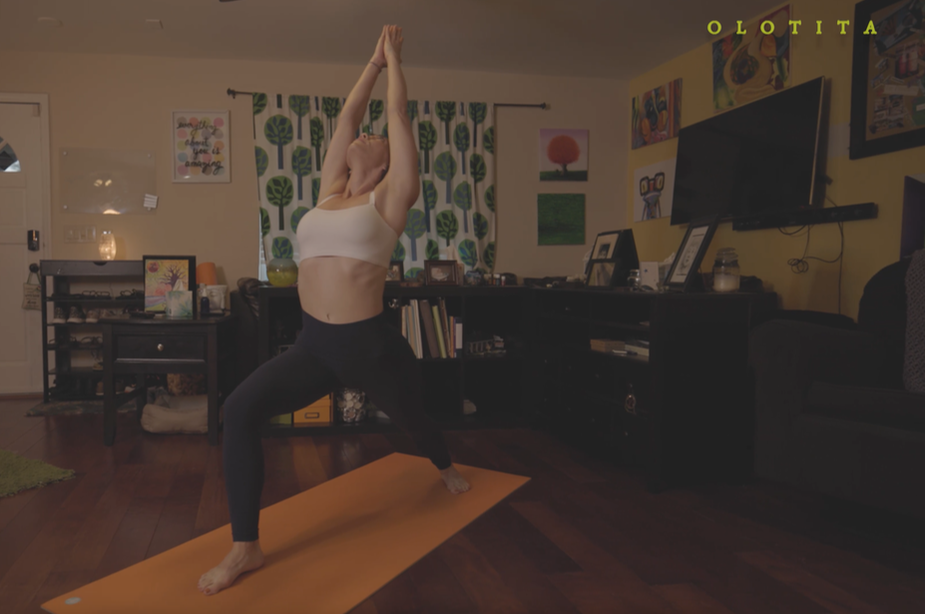 Virabhadrasana I – Warrior 1 7. Virabhadrasana I – Warrior 1Inhale, bring your right leg forward firmly on the floor. Pivot your back left foot flat, making sure your feet are hip-width distance apart. From there, raise your arms up to the sky, palms touching. As you lift your arms be sure to actively press your back foot down and back and your right foot down and forward. Chaturanga Dandasana 8. Chaturanga Dandasana - Exhale, bring your palms back to the floor, one on each side of your right foot. Step back to Chaturanga. Urdhva Mukha Svanasana / Upward facing dog 9. Urdhva Mukha Svanasana / Upward facing dog - Inhale into Urdvha Mukha Svanasana / Up Dog again. Adho Mukha Svanasana – Downward facing dog 10. Adho Mukha Svanasana – Downward facing dogExhale, press back into Adho Mukha Svanasana / Downward Facing Dog. 11. Virabhadrasana 1/Warrior 1 - on the other side From Adho Mukha Svanasana step forward with the LEFT foot into Virabhadrasana 1. Exhale through Chaturanga (12), inhale into Urdvha Mukha Svanasana (13) and exhale into Adho Mukha Svanasana (14) Stay here for five deep breaths. 15. Ardha Uttanasana – Half standing forward fold At the end of the fifth exhale, look forward and walk your feet to your hands. If your palms press flat into the floor, push your hands down and forward as you fold. Inhale and look forward pressing your palms down and back. 16. Uttanasana – Standing forward fold With your hands on the outside of your feet, Exhale and fold forward. If your palms come flat to the floor, press your hands down and forward as you fold your body down towards your thighs. Utkatasana – Chair pose 17. Utkatasana – Chair poseInhale, bend your knees and raise your arms in the air. Keep your tail bone long and look up towards your fingers. Exhale, press down through your feet to straighten your legs and bring the palms down by your side. Stand in Samasthithi. Do three to five rounds of Surya Namaskara B. If you are brand new to yoga, you are at the right place! And if you have an established practice, I will be sure to share a few tips that help you take your practice to the next level. Krista's Teaching Schedule If you want to join me for live classes, Krista offers them both virtually and in person Monday-Friday mornings. She also offers virtual or in person private sessions (Yoga, Meditation, Breath-work, Nutrition, Life Coaching and Mentorship). Be sure to signup for our newsletter to stay on top of local events and classes, Nysa products sales, new offerings, new products and more! Krista is a level II authorized Ashtanga Yoga teacher and is passionate about sharing these teachings with all who wish to learn. I hope you find this video series helpful to you in creating or maintaining your at home yoga practice! YOGA ASANA SERIES: VIDEOS 1-3
❤️We appreciate all your support. If you'd like to donate to our channel: Paypal
Please put "donation" in your message. Thank you. ❤️SHOP MERCHANDISE: Nysa Products ❤️CLASSES & PRIVATE INSTRUCTION: If you would like to book your spot for my upcoming group engagements or work privately with me on an individual basis please visit: https://olotita.com Let's Get Social Instagram: Krista Shirley Yoga Instagram: The Yoga Shala Facebook: The Yoga Shala Facebook: KristaShirleyYoga For other inquires please contact: krista@theyogashala.org
0 Comments
Welcome to The Yoga Shala's Yoga Asana Series for building or maintaining an at home Ashtanga Yoga practice. Today we explore the foundational principals of the Ashtanga Yoga system.
The foundational components of Ashtanga Yoga include breathing, bandhas and drishti. Asht-anga means eight-limbs. In this tradition we begin with the third limb, or asana. This is the physical movement portion of this eight-limbed practice. To access Video #1 of this Yoga Asana Series, Tap HERE Breathing This particular yoga style focuses on breathing far more than any other tradition out there. We practice deep breathing with sound, which is sometimes referred to as Ujjayi breathing. This type of breathing consists of slow deep breathing from your throat through your nose. Unlike a bellows breath, you focus on drawing the air from your pelvic floor on your inhale, slowly drawing the breath up through your stomach, chest, lungs and diaphragm. The word happens at your throat but through your nose with your mouth closed. When doing it correctly you'll feel a pleasant pulling sensation at your glottis. This is a vital part of the Ashtanga yoga practice and one that will take a long time to truly master. As you begin this practice, just focus on keeping your mouth closed and focus on taking slow deep inhales and slow deep exhales from your throat. Over time, you'll find you can maintain a steady breath throughout the duration of your practice. Each yoga asana has a prescribed inhale or exhale, known as a vinyasa or breath with movement. In the beginning, though, simply make sure you are breathing continuously with your mouth closed, without holding your breath. Bandhas Bandhas are another vital component to the practice of Ashtanga Yoga. These are energy locks that are located in certain areas of your physical body. To engage these 'energy' locks, you must simply engage the area of the physical body in which they reside. While there are more than three bandhas, in Ashtanga yoga we focus on the three primary energy locks. Mula or Moola Bandha Mula Bandha is your root lock. It's located at the base of your torso, or at the perineum. This is also where muladhara chakra resides. Activation or contraction of Mula Bandha is thought build prana, or internal energy. It is also touted to positively aid the respiratory, nervous, circulatory and endocrine systems in your body. You engage or activate this lock by squeezing your anal sphincter muscles on each and every inhale. Uddiyana Bandha Uddiyana Bandha is your navel lock. It's located in the center of the abdomen. It's a powerful lock that is felt in the stomach on every exhale. If you are doing deep breathing with sound correctly, you'll feel Uddiyana Bandha engage while you expel the carbon dioxide from your body on your exhale. As you push the breath out from your nose, through your throat, you'll feel your navel pressing towards your spine. Jalandhara Bandha Jalandhara Bandha is your chin lock. Unlike the Mula and Uddiyana bandhas, the Jalandhara Bandha only comes into use several times during the Ashtanga Yoga Primary Series. It is located at the pit of your throat. To activate Jalandhara Bandha, simply lower your head and bring the skin of your chin to the skin of your chest. This lock is used primarily during Pranayama practice, or the 4th limb of Ashtanga Yoga. When practiced together, the three locks are known as Maha Bandha, or the Great Lock. Drishti Drishti is your gaze or focus point during your yoga asana practice. Focus the eyes to the recommended gaze point (dristhi) in each asana. Drishti is intended to help you concentrate your mind on one steady point during the five breaths you take in each Ashtanga yoga posture. This will allow you to keep your focus internal, which will eventually lead to consistent focus on the bandhas, which will help unite the breath to everything. Through the use of dristhi, slowly your detachment and awareness will grow, and over time your mind begins to move towards Oneness. Practicing, and mastering drishti during the asana practice helps prepare the practitioner for other limbs of Ashtanga yoga. The fifth limb, Pratyahara, or sense withdrawal; and the sixth limb, Dharana, or concentration. In the Ashtanga yoga asana practice we utilize 8 gaze points:
Awareness builds organically through focus on dristhi, mental concentration on bandhas, Ujjayi breath, and asana. Through continuous practice, over time, you will naturally learn asana and maintain breath, allowing attention to be with your bandhas. In this way, over time, your thinking will decrease and you will move into the true purpose of Ashtanga Yoga…Moving Meditation. Sun Salutation A Sun Salutation A consists of nine (9) movements with breath, or vinyasa's. Each posture in the Sun Salutation A sequence is intended to flow one into the other with one breath, except for position six (shat). Once you get to position six of the Sun Salutation, or downward facing dog, you'll hold the asana for five deep breaths. After taking your fifth breath in down dog, you again flow breath by breath, or vinyasa, until you get back to where you started in Samasthitih. Check out Yoga Asana Series video #1 to learn the Sun Salutation A sequence step by step with Krista Shirley. Krista will demonstrate modifications for each movement as well as the full expression of each movement that makes up Sun Salutation A. Then, she will walk you through the nine movement sequence several times to help you familiarize yourself with each step in Surya Namaskara A. This will help you get to the point you can do on your own without guidance and also help you learn the prescribed breathing for each movement. The most ideal way to learn the Ashtanga yoga Sun Salutation's is by going to a Mysore class with an Authorized teacher. However, if you don't have a local shala near you, the second best option for you is the free Introduction to Ashtanga Yoga video by Krista Shirley on YouTube. We recommend you watch this video from start to finish the fist time you watch it. Additionally, Krista has added timestamps, listed on the youtube video description, for you to be able to refer back to whenever you want to work on a specific component such as breathing, bandhas, drishti, or Sun Salutation A. We hope you find this video series helpful to you in creating or maintaining your at home yoga practice! Practice Aids In addition to the free Youtube instructional video, we have additional practice aids to help you as you learn, work towards memorization and ultimate mastery of these postures. Krista's Sun Salutation A practice cards, seen above, or Krista's Ashtanga Yoga Primary and Intermediate series yoga poster are excellent yoga tools for your at home yoga practice. Remember that your asana practice is a life long journey. The benefits are countless but the purpose is singular – achieving a true connectedness to this world. About Krista Krista Shirley is a level II authorized Ashtanga Yoga teacher and the founder of The Yoga Shala in Winter Park, Florida. Krista’s dedication to her personal yoga practice shines through in her teaching. Her energy is contagious and inspiring! Krista specializes in meeting each student where they are. She's able to help them create a habit of daily practice, learn the sequence of asanas and work towards physical mastery of the postures. Moreover, Krista's intuitive teaching helps each student go inside themselves to truly integrate the body and mind. In turn this helps practitioners let go of the things in their lives that no longer serve them. Krista is here to help you begin or advance your Ashtanga Yoga journey and looks forward to sharing this transformational and enriching practice with you. If you want to join Krista for in person classes or events, she runs a morning mysore style yoga program in Winter Park, Florida. If you don't live locally, those classes are also offered virtually. If you would prefer personal one on one instruction, Krista offers virtual and in person private instruction. She also teaches workshops and retreats nationally and internationally. If you'd like to have her come to your studio or city, contact Krista. Let's Get Social Be sure to signup for our newsletter to stay on top of local events and classes, Nysa products sales, new offerings, new products and more! ❤️Follow on Instagram Krista Shirley Yoga The Yoga Shala ❤️Follow on Facebook Krista Shirley Yoga The Yoga Shala 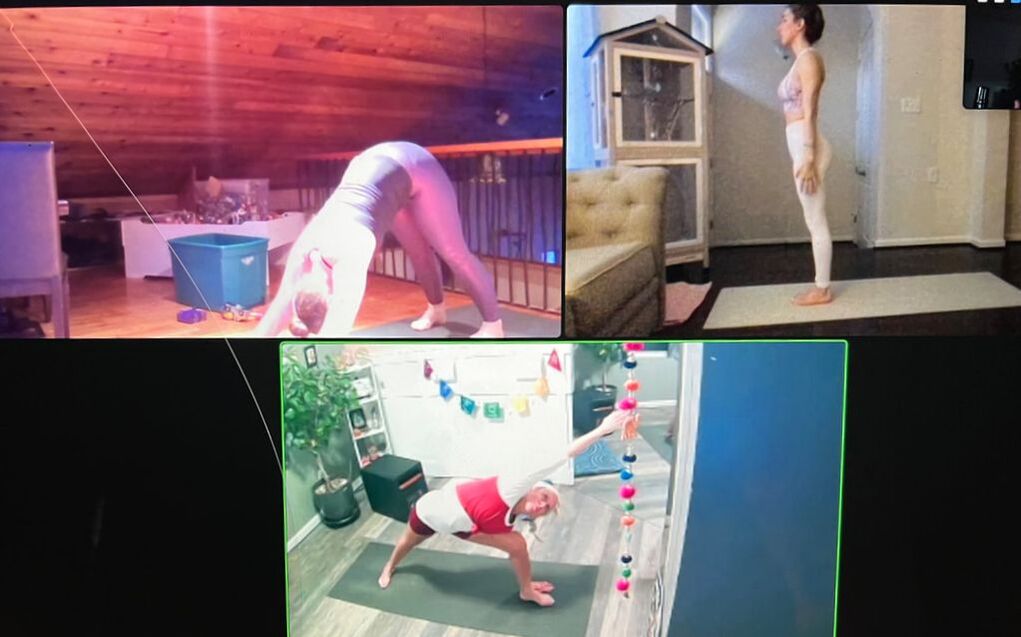 You love yoga. Going to a yoga studio, though, isn’t in the cards.Maybe you have small children. Or little time. Perhaps you don’t want to drive. Or, maybe you just enjoy the peace and privacy of at-home yoga. No need to miss out on professional instruction to advance your yoga practice. Online yoga classes from the Yoga Shala bring real-time group yoga teaching into your home. Virtual Yoga Classes:Even while participating virtually in a live yoga studio class at the Yoga Shala, you’ll feel as if you are there. Krista Shirley, a Level 2 authorized Ashtanga yoga teacher, gives you the same individualized attention as those practicing yoga in person. Krista provides feedback as you work through yoga postures. She directs adjustments to your poses. She’ll demonstrate new postures. You’re not practicing alone – ever. Located in Winter Park, FL, the Yoga Shala offers daily in-person classes, and even a Monday evening class. Krista uses the highly-effective Mysore method to teach Ashtanga yoga, a step sequence of yoga postures more than 5,000 years old. Yoga Style:Mysore style Ashtanga yoga is, hands down, the best way to learn and practice yoga. You work at your own pace, under the guidance of a qualified teacher, in a safe and peaceful atmosphere. You’re surrounded (even virtually) with other like-minded souls. Curious about Ashtanga yoga and the Yoga Shala? Visit the yoga studio’s YouTube channel to experience Krista’s expertise and personal approach! Who Can Join Virtual Yoga Classes:All experience levels are welcome at the Yoga Shala, including those just learning how to do yoga. Online yoga classes are ideal for yoga for beginners. While the in-person experience at the Yoga Shala is supportive and communal, some still might not feel comfortable. Virtual yoga instruction with Krista is like a private yoga class! People practice yoga for many reasons. It’s a safe, adaptable alternative to cross-fit and other strenuous workouts, with many of the same benefits. It’s ideal for older students, people with physical limitations, or those with minimal time for fitness. Benefits of Virtual Ashtanga Yoga Classes:Given its emphasis on breath control, Ashtanga yoga is great for cardiovascular health. Its sequence of yoga poses, focused on mastering each before progressing, creates greater flexibility. Practitioners enjoy a heightened sense of self-awareness as they zone in on proper posture, achieved in large part through muscle control and measured breath-work. Yoga unifies the mind, body and soul. If this is what you seek – regardless of where you live – join in online 90-minute yoga classes with the Yoga Shala. All you need are a yoga mat, hand towel and a good computer camera. New Students to Virtual Yoga Classes:New students should plan for one hour. If they participate three days a week (or more), they will build on their practice and soon engage for the full 90 minutes. Students can arrive anytime between the start of instruction and 45 minutes prior to its conclusion. Hydrating before and after class is strongly advised. Yoga can be practiced almost anywhere – one of its most valuable qualities. In-home yoga is tremendously popular. No need to do so alone – online yoga classes connect people from hundreds (or more) miles away, striving toward a health-focused goal. Ready to learn Ashtanga yoga in the privacy of your home? Contact Krista and the Yoga Shala to virtually join its community. You’ll find people with a common purpose … and expert yoga teaching that puts you on a path to where you want to go. By Tiffany Young Living a completely stress-free life might seem impossible, but with a little effort, having peace and tranquility is doable. Cultivating mindfulness in your life is like planting a garden -- feed the good and weed out the bad.
It’s no surprise Orlando is one of the best places in America to live. With so many activities to keep your body moving and mind at rest, you’ll find it easy to cultivate mindfulness. Exercise and mental meditation are simple ways to combat stress. Here are five ways to bring your head and body together to cultivate mindfulness. 1. Yoga The key to managing your world depends on how well you can clear out the cobwebs and focus on the positive. Ashtanga yoga is more than twisting and turning. It brings postures (asana or poses), meditation, concentration, and breathing together. Benefits of yoga include stronger muscles, increased flexibility, better breathing, balanced metabolism, and more stamina. Yoga also helps you control the physical and mental pain from arthritis, carpal tunnel, high blood pressure, and backaches. There is no one-size-fits-all method of yoga. Hatha is a physical combination of many styles, focusing on breath-controlled exercises, yoga postures, and a rest period. No matter which style you choose, yoga’s benefits go beyond the mat. It can make you a more mindful eater, enhance your cardiovascular system and even give you a better body image. 2. Meditation Meditation is one way to focus on the sounds and sensations around you. Take five to ten minutes each day to:
Take time to give yourself a “body scan.” Lay down, close your eyes and focus on each area of your body -- toes, feet, shins, calves, and on up to your arms, torso, neck, and head. Feel what’s aching and breathe deeply to control the pain. Relax each muscle. 3. Stake Your Space Creating a personal space is important for self-care and wellness. Who should join you? No one. And it’s up to your partner and children to understand and respect your space and times when you need to be alone. Stake your space for exercise, music, reading, crafting, or other hobbies. Whether in a bedroom, finished basement, or home office, take time to make the space comfortable. Freshen the room up with greenery! Aloe vera, spider and snake plants, English ivy, bamboo, and peace lilies absorb indoor chemicals of benzene, formaldehyde, and trichloroethylene. Lavender, gardenias, and jasmine are a few plants that emit soft fragrances. 4. Green Up That Thumb! Your personal space can be outdoors. Gardening is a perfect way to connect with nature. Breathing fresh air, listening to birds, and absorbing sunshine (an important source of Vitamin D) help calm and declutter your mind. Make it easy and enjoyable by planting a low-maintenance native garden. Flowering shrubs like firebush and beautyberry grow well in Orlando. They adapt to the local climate and soil conditions and provide pollen, nectar, and seeds for butterflies, birds, and other wildlife. Add a bench to the garden and take time to enjoy the wildlife. 5. Water TherapyThe beach is just a short drive away. There’s nothing like a vast ocean to remind us of how small we are. Watching waves come in, sand blowing, sunlight dancing off the water, seagulls swooping in … it’s all a peaceful setting to help you clear your mind. If you can’t make it to the beach, set up a water fountain inside or outside. The flowing water makes a pleasant sound to lull you into a peaceful sleep. You can’t control unpleasant events, but you can control the way you react to them. And remember, “stressed” is just “desserts” spelled backward. Personal trainer and yoga instructor Tiffany Young helps her clients get in touch with their bodies and souls. Need someone to teach you the downward dog or help analyze your astrological chart? Tiffany's your gal. We never appreciate sleep more than when we are not getting enough of it. When we get adequate sleep, it is a renewal of our mind, body, and spirit. It is amazing how sleep patterns influence our entire lives, from our energy levels and cognitive abilities to the appearance of our skin and length of our lifespan. Sleep matters.
Fortunately, there are many practical ways to boost your sleep quality. Reducing stress levels during your waking hours is a good place to start. Yoga practices offer stress reduction and reconnection with your mind and body. Yoga is also an ideal way to improve sleep patterns. The Yoga Shala in Orlando teaches students how to use Ashtanga and Mysore methods to produce calm and enhance physical and emotional well-being. You can also reduce stress in other areas of your life to promote better sleep patterns. Stress Reduction for Better Sleep There are a multitude of ways to reduce stress, but to find the method that works best for you, it may be important to assess the source of the problem and how it is impacting your sleep patterns. Consider your sources of stress in life; are you struggling with work, relationships, or worries about loved ones? Think about the ways these stressors impact your daily routines and whether they are on your mind at bedtime or nagging at you throughout the day. You can reduce the impact of stress on your daily life by keeping a journal. Writing out your stressors will not solve them but will decrease the burden on your psyche and enable better rest. Share your thoughts and feelings with a trusted friend or life coach, who may be able to help you sort through things aloud rather than carrying the stress alone. Regularly scheduled massage therapy is another terrific way to relax on a regular basis and is likely to enhance your sleep patterns. As you explore avenues for sleep, consider the ways technology can assist. Technology for Sleep Improvement You can access a variety of apps and gadgets to assist you in your efforts to sleep well. Relaxing sounds and binaural beats have been shown to offer deep relaxation and improved mood by tapping into the theta, alfa, and delta wavelengths of the brain. Using a quality noise-canceling headphone set can help you focus solely on the sounds without distraction. For greater comfort, consider using a speaker system that can deliver high-quality sound and relaxing music to your bedside. Portable devices are a convenient option that can travel with you for optimal sleep when you are away from home. Products like chiliPAD Sleep System address distractions such as bed temperature and allow you to adjust up or down to accommodate your comfort level. Other items such as 10minds Motion Pillow tracks your head position and helps reduce snoring by adjusting inner airbags. As your sleep begins to improve, you will notice a variety of other improvements in your daily life, including the way you look. Look Better Because You Sleep Better It may not seem like an obvious connection, but it has been proven that the better you sleep, the more your outward appearance exudes health. One important reason sleep helps with our appearance is through the production of collagen, which minimizes the appearance of wrinkles. Good sleep also boosts our immune system and fosters tissue and cell repair, which can improve the appearance of skin and reduce irritation and inflammation. Sleep is a critical part of staying well, from skin cells to heart health. You can make decisions in your daily life that can help you sleep better, from reducing stress and exercising to choosing a healthy diet that allows your body to function at its best. Technology can even aid in your sleep efforts and offer you optimal relaxation for your mind and body. To learn more about how yoga can help you relax, improve your sleep patterns, and increase your overall wellness, check out The Yoga Shala. Image credit: Pixabay.com What’s greener than eliminating waste, saving water, and being kind to the environment? Saving the environment with your business, of course. From conservation in your everyday operations to maintaining an eco-conscious vibe in your marketing and product promotion efforts, going green can be challenging. However, if you want to save the planet with your next business idea, check out these ideas for ecopreneurship from The Yoga Shala. Reduce Your Footprint No matter what business idea you go with, reducing your environmental footprint is the first step toward an eco-friendly organizational model.
Stay in Tune with Your Roots Going green in business is about more than just saving trees and conserving water. Consider these eco-conscious elements of your organizational routine. Recognize and embrace spirituality, even during the workday.
Follow the Legal Steps Running a company can sometimes involve acquiescing to not-so-green rules and regulations. Cover your basic legal necessities (paper-free when possible) so you can start saving the planet sooner rather than later.
Photo via Unsplash By Jennifer Li Few would argue we live in stressful times. Mix a pandemic with social and political dissension and add the routine anxieties of daily life, and you have a stewpot of stress. Too much stress leads to anxiety, depression, high blood pressure, heart disease, and – well, you get the picture. You can do things to keep the stewpot from boiling over. Here are some simple ways to combat stress. 1. Exercise It may seem like a contradiction... that placing stress on your body can reduce internal stress, but it works. Exercise lowers bad hormones like cortisol and increases good hormones like endorphins, which are proven to improve your mood and help you sleep. Exercise doesn’t have to mean sweaty hours in a gym. Choose something you enjoy. Just an hour in the garden can burn calories, and living in Orlando allows us to garden year-round. Or tackle a project in your yard that you’ve been putting off. Maybe build a rain garden. It’s one of several hot landscaping trends in Orlando to choose from. Biking and walking are also excellent options. You can enjoy the outdoors while combating stress. Yoga is perhaps the best stress reliever. Not only does it entail physical exercise, but it also provides a mental and spiritual boost. 2. Watch Your Intake What you choose to put into your body can worsen stress. At the top of the list is caffeine. On the positive side, it gives you a shot of brain stimulation that increases alertness and reduces drowsiness and fatigue. On the negative side, too much leads to jitters, irritability, confusion, and headaches. If you can’t do without that cup of Joe in the morning, at least limit the number of cups. Watch out, too, for soft drinks – many contain a strong dose of caffeine. Some foods actually reduce stress. Broccoli, whole-grain breads, eggs, fish, chamomile tea, and avocados are a few of them. Here’s something to lift your spirits – chocolate is proven to reduce stress! 3. Turn Over a New Leaf – or Several Modern science is proving what our Victorian ancestors knew by instinct – plants reduce stress. “Interaction with indoor plants may reduce psychological and physiological stress,” according to the Journal of Physiological Anthropology. Plants rid the air of toxins and improve your mood. Aloe vera, English ivy, lavender, and peace lily are among those that give so much while demanding only a little light and water. 4. Music Soothes the Savage Beast Your favorite tunes (or tones) also reduce stress. Researchers at Stanford University confirm that “listening to music can affect brain functioning to the same extent as medication.” Easy listening music is best for stress relief, but light jazz, and Celtic and Native American rhythms are also effective. Mick Jagger should probably be reserved for another occasion. 5. Take a Good Scents Approach Like music, aroma can lessen stress. Certain aromas lower cortisol and provide a sense of contentment. Lavender is probably the all-time favorite mood enhancer, but lemon, rosemary, and sea breeze are popular, too. Essential oils and potpourri are ways to add fragrance to your home, and candles offer visual relaxation along with a soothing scent. Getting away from life’s stresses may not be doable, but a yoga class followed by a cup of tea, some Miles Davis in the background, and a lavender-scented candle beside your money tree plant might go a long way toward turning down the heat under the stewpot of stress. Jennifer Li is a vegan, physical therapist, and yoga instructor who writes about spiritual and wellness issues for both humans and their companions.
There is no gender, age, body type, or ability required to start doing yoga. From casual practitioners to serious fitness enthusiasts, everybody can benefit from enjoying this practice a few times a week. That said, the ancient Hindu practice is now a worldwide sensation. Much of that has to do with the growing interest in overall wellness. Many people, especially young people, recognize how yoga adds to their quality of life. In fact, Maryville University’s projection for exercise science students highlights the increasing importance of fitness and athleticism, particularly among millennials in the US. Around 17.2 million of them belong to a health club and try different exercise trends, like yoga. To say that yoga is a rewarding practice for all kinds of people is an understatement. Even the sports industry has taken notice of its undeniable benefits to physical and mental wellness. Thus, athletes of all levels — and across different sports — are starting to incorporate yoga, or borrowing from its concepts, into their training program. If you’re curious to learn more, these are four ways yoga can improve athletic performance: • Increased mobility Much of the training regimen of athletes involves sport-specific drills and strength and conditioning exercises. While that’s critical for building endurance and power, athletes also need to improve flexibility and mobility. In short, they need to incorporate stretches to lengthen their overly tight muscles. NFL trainer James Collins adds that yoga also helps increase movement around joints, particularly in key areas such as the elbows, wrists, ankles, hips, and shoulders. Overall, this adds to better mobility, which for athletes means executing complicated movements with relative ease. For example, a soccer player with high hip mobility can generate a more powerful kick. In fact, in many cases, poor athletic performance isn’t due to a lack of strength but rather, poor mobility — further highlighting the importance of adding flexibility training into the mix. • Efficient injury prevention and recovery In a recent article, ex-athlete Mollie Wilson recounted her experience with injury and how yoga helped her bounce back from it. Athletes put a tremendous amount of stress on their bodies, and so injury becomes an occupational hazard. Practicing gentler forms of yoga can be therapeutic for injuries or pain. Yoga can also help minimize the risk of getting injured in the first place through a number of ways. First, a more vigorous practice like Vinyasa or Ashtanga can build musculoskeletal strength. More pliable muscles and mobile joints also adapt to shock more efficiently. More importantly, yoga reveals muscular imbalances, which can be addressed through consistent practice. • Enhanced balance Training balance is also a must for athletes. A study by Jerzy Kukuczka Academy of Physical Education researchers underscores the importance of proprioception for athletes, or the awareness of one’s body position. Knowing where your body is in space is key to better movement and injury prevention. Fortunately, balance is definitely a target area in yoga. Athletes will learn how to stand on one leg, which they can later on apply in their discipline. For example, a baseball player can improve their pitching technique and power through single leg balancing poses like Tree or Warrior III. • Improved focus When talking about yoga, it’s important to recognize that it’s not just a form of exercise. It’s a form of meditation too, which everyone, not just athletes, can benefit from. Through breath control, one can eliminate stress and enhance their focus. For athletes, the University of South Wales' David Shearer writes on The Conversation that yoga can maximize performance by preventing them from choking under pressure. All in all, yoga is a great all-around practice for athletes. Whether you’re just looking to find an efficient stretching routine or wanting to target a specific skill, it’s very much worth incorporating yoga into your routine. Post intended only for the use of theyogashala.org Post by: JBoggs Watching someone you care about face the challenges of aging can tug on your heart, especially if you see them making unhealthy choices. However, knowing how to address your concerns without creating conflict or hurt feelings can be tough. The last thing you want is to aggravate the situation, so here’s how to gently encourage a senior toward a better quality of life.
Embrace Activity There are many reasons seniors become more sedentary. Maybe an injury or illness created a setback, or perhaps a fear of falling has become a worry. Unfortunately, as Medical News Today explains, some studies indicate when older adults are sedentary, it could potentially lead to experiencing the effects of aging at a faster rate. If your senior is currently living a sedentary lifestyle, think about ways you can encourage more activity. For instance, some Humana Medicare Advantage plans cover fitness programs through Silver Sneakers, a fitness program that partners with gyms across the country offering fitness memberships and age-appropriate classes to qualifying seniors. Your loved one could potentially take something like a yoga class with peers, or work directly with an instructor to address balance concerns. Help your loved one review their Medicare Advantage plan to find out more about eligibility and other benefits that can bolster their healthy lifestyle efforts. Find Relief Naturally Many seniors experience chronic health concerns that can leave them feeling poorly, or simply needing help with managing symptoms. Some research indicates that as a result, it’s increasingly common for seniors to experience an unhealthy dependence on prescriptions. Self-medication to cope with chronic pain, depression, and anxiety can lead to addiction. It’s often an inadvertent issue, as seniors might forget dosages or simply take pills when they don’t feel good. There are a few different things you can do to help. Consider offering to assist your senior with managing prescriptions, and think about adding an automatic pill dispenser to your loved one’s medicine cabinet. To help with symptoms like chronic pain, depression, and anxiety without resorting to medications, CBD oil is a helpful, natural alternative, and it can even help those undergoing treatment for cancer. You senior should check in with their doctor before adding any new treatments. Enjoy Healthy Foods It’s not unusual for an adult’s eating habits to drop off with age. Age-related changes in how food is perceived can lead to a reduced appetite, as foods don’t sound, feel, taste, or smell like they used to. Some seniors struggle with food preparation due to lost dexterity and strength. Mobility concerns can also keep some seniors from being comfortable with grocery shopping, and poor oral health can also be a factor. However, older bodies still need proper nutrition, and in some ways it’s even more important for seniors to eat a healthy diet. For those who aren’t eating well, try asking what might be holding your loved one back, and then address the specific concern. If foods aren’t as interesting as they used to be, suggest some herbs and spices to add flavor. Those struggling with food prep can often find relief with clever kitchen tools, and meal delivery services can help with getting groceries to your loved one’s home. There are many challenges that can go hand in hand with aging. Whether activity levels are dropping, medications are a worry, or eating habits are waning, there are ways to help. If you have a senior who is developing unhealthy habits, gently encourage a new direction. Ingredients:
- Six Hass avocados - One purple onion chopped - Two jalapeños chopped and de-seeded - Two tomatoes diced - Salt and pepper to taste Mash your avocados. Stir in onion, jalapeños, tomato, salt, and pepper. Chill for at least an hour. Serve with your favorite tortilla chips or veggies.  By Mollie Wilson Being an athlete is hard. It is demanding. It's probably one of the toughest things out there to be. Sometimes people get this notion that athletes are basically having fun. Earning cool money while having fun. The dream life and not the 9-5 kind of job they have to turn up at. "Imagine getting paid for recreation! "They are wrong. Remember the time you went on that race and started panting after a while all out of breath. Or The time you went for what you wanted to be an intensive workout only for every fibre of muscle in your whole body to scream out in intense burning pain. Well, being an athlete is tougher than that. Way more demanding. It's a different ball game entirely so to speak. Being an athlete demands a mix of endurance, perseverance, dedication and commitment. It also demands an unwavering positive belief and a serenity of mind. You need all these qualities if you are going to succeed as an athlete. If you are going to beat the many obstacles that come your way as an athlete. You need them and more if you are going to bounce back from the injuries and come back fit to compete again. Yoga, a systematic practice that involves meditation, breath control, positive thinking, exercise, and relaxation, is able to provide many of these key traits that can determine if an athletic career is fulfilling or not. This ancient discipline provides a broad range of physical, spiritual, and mental training to its adherents and with its proven consistency in getting positive results, it is hardly surprising that Yoga has a lot of people who not only love it but are also dedicated partakers of it, myself included. When I say myself, I chuckle a bit because my relationship with Yoga wasn't the conventional love at first sight stuff. It wasn't that I hated it or disliked the practice, it was simply that I was skeptical. I just did not see how sitting down in one corner, or on a mat, staring blankly into space (as I saw it then, I know better now) was going to help me become a better athlete or even a better person. In my opinion then, it simply showed that I had lots of idle time on my hands to blow sitting down in one corner and being unproductive. And athletes do not have lots of idle time. Between the strenuous training and exercise sessions which can take up a lot of time and energy, there wasn't even enough time to fulfil everyday life tasks and domestic duty. Definitely I thought, no time to spend laying on a mat, doing nothing useful. I just did not see the value in Yoga then and was consequently very skeptical of the concept. How wrong I was. That was what I would discover when I came to fully appreciate the immense benefits of Yoga. Me falling in love with Yoga was a classic case of an unpleasant situation somehow leading one to discover something good previously hidden to them. It was a process brought about by my Injuries. Injuries are part of an athlete's life. They are almost inevitable in occurring at some point. The reason for this is not far-fetched. An athlete’s body takes a lot of punishment. A lot of stretching to the limits and conditioning. An immense amount of output is consistently demanded from the muscles and joints of an athlete. And despite the fact that as athletes, we learn how to condition our bodies to withstand a lot of stress and strain so as to be able to put out top notch performance, and consequently, are bodies become capable of withstanding higher levels of demand than that of a regular person, it still doesn't become unbreakable. So, injuries still happen. After a particularly nasty injury of mine, my body was so badly broken in that I had serious doubts if I would be able to come back. Was I ever going to be able to stretch again with the same elegance as before? Was my body going to bounce back to normal healthy levels? I had doubts. That's where my love story with Yoga begins. Someone suggested Yoga along with certain other things I was to do as I went into physical therapy in an attempt to bounce back. He promised if I followed it, I would be back on my feet in far less time than I initially expected. With some doubt at the beginning (after all I had just flippantly tried out yoga a few times in the past, and unsurprisingly didn't find it fulfilling), I began it. This time I had a solid purpose to drive me, so I dedicated myself to my yoga practices. Long story short, it worked. It worked even better than I had expected. My yoga practices were extremely in getting me back on form. Especially the stretching exercises and the mind exercises. After getting back, I fully incorporated Yoga into my post workout regime for the remainder of my career. Now I'm retired from active athletics but I'm still a dedicated to the practice of Yoga. Even more, now that I get to dedicate more time to it, I have now had a greater appreciation of its immense benefit especially how it has helped me cope with the resurgence of old injuries picked up during my career. Sometimes the old injuries become inflamed and that can be quite painful. I find out that Yoga along with application of coconut + CBD oil, (which you might want to check out here if you are interested.) Helped to a great extent in my recovery from inflammation. As it did during the times, I was learning to stretch again using yoga during my recovery period. All in all, I'm just really grateful I discovered Yoga as it not only proved valuable during my career, it has also continued to be of immense benefit to me even after my career. I would encourage all athlete, at any level, to partake in Yoga not only as a recovery practice but also as preventative care for your mental and physical body. After a long winter, warmer weather is finally upon us. And along with the milder temperatures comes BBQ season. So get your grill and spatula ready to fire up some delicious dishes you can enjoy outdoors with friends and family!
From burgers to hot dogs to grilled veggies and beyond, there's something about barbequing that symbolizes summer. This season, try adding a little something extra to the traditional sauces that you like to lather on your meats and veggies — like cannabis. Adding cannabis edibles to your grilled delights can provide both you and your guests with an enhanced dining experience. The secret is to add marijuana it to your sauce. Cannabis-infused BBQ sauce allows you to tamper with all sorts of different meals while delivering serious flavor. The question is, how can you infuse your BBQ sauce with marijuana? Here are a few recipes to try out, as well as one ready-made sauce you can buy that already comes infused with cannabis. Ganja Juice Cannabis-Infused BBQ Sauce If you're looking for something that's ready to go without having to figure out recipes and ingredients, Ganja Juice BBQ sauce is available for purchase. Infused with THC, this sauce will entertain both your palate and your mind. This sauce includes a unique blend of spices and seasonings along with cannabis-infused oil that provides the perfect dose of THC. Use it for meals at home or take it with you while on the go to enjoy THC with any meal no matter where you happen to be. You can use it as-is or incorporate it into your own recipe to concoct something truly unique. Cannabis-Infused BBQ Sauce Recipes If you're the type to tinker with different recipes and create something homemade right from your kitchen, then try out any one of these cannabis-infused BBQ sauce recipes to season your next grilled meal. Mary Jane’s Marijuana BBQ Sauce Creating something in your own kitchen can be fun, but what you don't necessarily want is anything overly complicated. Luckily, this particular sauce recipe from Cannabis Cheri is both delicious and easy to make. Requiring only a handful of ingredients, you can whip it up in no time. Blending both sweet and spicy flavors, this marijuana barbecue sauce will drive the flavor factor way up on just about any type of grilled food, including beef, pork, ribs, chicken, and even veggies and tofu. This recipe includes 20 mg THC per 1/4 cup serving, though you may want to mess around with the dosing to suit your particular needs. Like any other marijuana recipe, the key is to start on the low end of the spectrum with your dosing and slowly work your way up to achieve the desired effect. Ingredients: 1 onion, chopped 1 tbsp garlic, minced 1/4 cup cannabis-infused vegetable oil 2 tbsp chili powder 1/2 tsp cumin 2 tsp black pepper 1/4 tsp cayenne pepper (optional) 24 oz ketchup 1 cup packed brown sugar 1/4 cup apple cider vinegar 1/4 cup yellow or brown mustard 1/4 cup Worcestershire sauce 1 tsp liquid smoke Salt to taste Directions: In a medium saucepan, heat the oil over medium-low heat. Add onion and cook for about 3 minutes, stirring regularly. Add garlic, stir for another minute, then add the chili powder, cumin, black pepper, and cayenne pepper. Add all remaining ingredients. Simmer uncovered for 20 minutes, stirring often. Allow to cool before using. Sweet Honey BBQ Sauce Eat Your Cannabis' version of cannabis-infused BBQ sauce is a little more on the sweet side, given the main ingredients: honey and brown sugar. A classic type of BBQ sauce, honey-based sauces add just the right amount of sweetness to your meats, and this particular recipe takes things a step further by blending marijuana into the mix. Any item you grill will match perfectly with this honey BBQ sauce. You may even want to use it as a sauce base for your sandwiches! Ingredients: 1/3 oz finely ground cannabis flower 3 tbsp green onion, chopped 1 lime, juiced 1 tbsp honey 2 tbsp brown sugar 1/2 cup apricot nectar 1/4 cup water 1/3 cup vegetable oil 2 tbsp apple cider vinegar 2 tbsp Worcestershire sauce 1 tbsp soy sauce 3/4 can tomato paste 1 tbsp fresh garlic, minced 1/2 tbsp chili powder Dash of cayenne pepper Directions: In a crock pot, combine the vegetable oil, ground cannabis flower, green onion, lime juice and water, and cook on low for 2 hours. Add all other ingredients, mix well, and cook on low for another hour, stirring occasionally. Store in an airtight container in fridge before serving. Texas-Style BBQ Sauce You won't get a more authentic BBQ sauce than a Texas-style version, and this recipe delivers in serious taste. And with a dab of cannabis included in the recipe, you can enjoy a nice buzz along with your dancing taste buds. Try Bloom Farm’s cannabis-infused Texas-style BBQ recipe for your next barbeque’d meal. Ingredients: 1 small onion, minced 4 cloves garlic, minced 2 stalks celery, chopped 1/4 cup cannabutter 1 cup ketchup 1 cup tomato sauce 1/4 cup molasses 3 tbsp brown sugar 1/4 cup water 1/4 cup apple cider vinegar 1 tsp chili powder 1 tsp paprika 1/2 tbsp salt 1/2 tsp black pepper Directions: In a saucepan over low heat, combine the water, ketchup, tomato sauce, brown sugar, and molasses and heat until the mixture starts to simmer. Add the onion, garlic, and celery and continue to simmer for about 8 minutes. Transfer the mixture to a blender, add all remaining ingredients, and puree until smooth. Cool in the fridge. Final Thoughts There are so many creative ways to enjoy cannabis, especially when it comes to edibles. While you can still enjoy the traditional cannabis cookie or other baked goods, adding marijuana to other food products like BBQ sauces is a unique way to enjoy the benefits of cannabis while tempting your taste buds at the same time. Take your backyard barbeques to new heights with any one of these delicious cannabis-infused BBQ sauces! This article originally appeared on myfoli.com Yoga and meditation have gained popularity over the years as a low-impact way to keep the body and mind healthy, but many people are intimidated by the thought of learning a new exercise. Seniors can often have a hard time putting together a new routine, especially if they have health or mobility issues. Yet, yoga is one of the easiest workouts to break into because it’s low-impact, and it can be molded to fit just about anyone’s needs. In fact, individuals who are living with a disability or who have an existing health condition may find that it’s one of the best ways to exercise simply because it allows for modifications that make movement easier.
When paired with yoga, meditation can be a wonderful way to keep anxiety or stress under control, and creating a routine that allows you to do it daily can help you learn to cope with those feelings when they arise. Boosting your mental health is crucial as you get older, as it helps keep you safe from the symptoms of depression and other mood disorders. Not surprisingly, there’s a lot to consider when it comes to finding an exercise routine that works for your needs. Here are just a few things to think about. You Can Do It from the Comfort of Your Own Home Yoga classes are likely available in your area, but one of the benefits of learning the poses is that you can do it from the comfort of your own home. Once you’re comfortable with establishing a routine, all you need is a space to practice in and maybe a yoga mat for comfort. If you have a spare room you’re not using, such as a dining room or extra bedroom, this can be the perfect spot for your practice. You can use YouTube tutorial videos and fitness apps to supplement your workout at home and keep yourself motivated to continue with a healthy routine. Improve Balance and Stability Yoga focuses on balance and strengthening your core, which is great news for seniors who have mobility issues. By practicing the poses every day, you can build up your balance and stability, which can, in turn, help prevent falls — the leading cause of injury to seniors. Just make sure you’re stable during your workout; you can use a chair to help with balance if you feel unsteady. Get Calm Your ability to reduce stress and remain calm can seriously affect everything from your heart health to your mood, making yoga one of the best ways there is to impact your overall well-being. When combined with meditation, yoga can help you relax, focus on your breathing, and put the stresses of the day behind you, so make sure your practice space is free of distractions. Listen to soft music, dim the lights, and focus on yourself for the entirety of your workout. You’ll be doing your body — and mind — a favor! Help Your Gut Among yoga’s many benefits, one of the most overlooked is the fact that it can help with digestion and stomach issues. Many studies show that the state of our overall health depends on gut health, and digestion is one aspect that is affected by both good and bad gut bacteria. When your gut houses plenty of good bacteria, your immune system and mood also improve. So, when you practice yoga regularly, you’re setting up your body and mind for good overall health. Because of the nature of many of the poses and the way they work your abdominal muscles, you’ll likely see an improvement in the way your body handles certain foods. One unexpected side effect of this is that it can help you sleep better, reducing the risk of heartburn and allowing you to rest easy through the night. Yoga and meditation can have multiple benefits regardless of your age and abilities; the key is to start things off right by finding a routine that works best for you. Remember to go slowly and to stop if you feel any pain. By combining a workout for your body and mind at the same time, you’ll be able to focus on your wellness every day. If you’re going to dive headfirst into the world of juicing, you will need a great juicer and some fresh produce, but you'll also need some great recipes.
While technically you can just unload your crisper into most juicers without any problem, a little strategizing will help you maximize the taste and the nutritional value of your juicing concoctions. In this article, we take a close look at a few yummy juicing recipes you’ve just got to try. 1. Breakfast Blend https://www.theworktop.com/breakfast-brunch-recipes/orange-carrot-ginger-juice/ If you’re like most people, you probably want to start your day off with something tasty and non-confrontational (we love our greens but sometimes they can be a little much at six a.m.). If you just can’t stomach starting your day with kale, this breakfast blend may be to your liking. With several simple ingredients, you can enjoy something sweet, energizing, and distinct. Start by washing your carrots, oranges, and ginger. The tops and peels may need to be cut off to maximize the taste factor. After that, chop them up so that they are sized appropriately relative to the needs of your juicer, and let the machine take care of the rest. The orange provides a great flavor to the drink, while the carrots can aid with digestion and heart health. Ginger is full of fiber and antioxidants, enhancing the health value of the drink while also adding a unique taste. Recipe -Four carrots -Eight oranges -One inch of ginger 2. Time to Get the Greens In https://www.modernhoney.com/healthy-juice-cleanse-recipes/ Now that you’ve met the day with a tasty beverage, it’s time to move on to a vitamin overload. That’s right, it’s time to drink your greens. This green juice features cucumbers, spinach, celery, ginger, apples, and parsley to blend an enticing flavor with lots of nutrients. The nice thing about this juice is that it is calorically light, but it is also rich in flavor. The cucumber and ginger make the drink taste extremely refreshing. Meanwhile, the two apples overload the taste of the spinach, so you get all the nutrients, but you don’t have to choke down that earthy taste that some people turn away from. Bottom line? It’s a tasty beverage that packs an insane amount of nutritional value in a single cup. Recipe -Two cups spinach -Six celery stalks -Two cucumbers -One inch of ginger -Two apples -1/2 cup of parsley 3. Kale That Isn’t Terrible https://www.copymethat.com/r/lHcqQbM/tropi-kale-juice/ Kale is one of the most nutritionally powerful foods in existence. If it didn’t taste like dirt, we’d probably all be eating it constantly. But what if you could load up on the kale with a beverage that doesn’t make you gag? Indeed, that is the promise of this tropical kale concoction. Using just five simple ingredients, you can enjoy the taste of the tropics with every sip you take. The kale packs a nutritional wallop, while the pineapple, coconut, and apples bat cleanup to make sure the drink tastes, you know...good. It’s great as a meal or a snack, so drink up! Note: if you’re looking for more recipes like this one I would recommend checking out some of these recipe books. -Two bunches of kale -Two apples -1/2 cup coconut -1/2 pineapple Conclusion Food can be medicine, but it doesn’t have to taste like it. The recipes on this list feature the perfect combination of taste and health benefits. But the beautiful thing is that there aren’t really any hard and fast rules when it comes to juicing. In fact, for most people, it is a very personalized experience. Juice enthusiasts like to tinker, and you needn’t be an exception. Feel free to experiment as you look for the perfect juice recipe for your palate and your health. You’ll be glad you did. The Yoga Shala now offers 20 different yoga classes, and we warmly welcome current and aspiring yoga practitioners of all levels to discover the joy of harmonic breath and movement.
If you’re looking for a beginner’s class, we offer a Yoga Basics class on Sundays, Tuesdays, and Wednesdays. If you want to turn up the heat and are up for a challenge, we have a variety of Power, Buti, Hatha and Vinyasa classes available every day of the week. If your body is asking for a more relaxing and restorative flow, drop in to Yin Yoga on Sundays, Relax & Restore on Mondays, Flow and Stretch on Wednesdays, or Therapeutic Yoga on Wednesdays. New Students can take advantage of all these fabulous new offerings for our special $39 for 30 days of unlimited yoga (non-ashtanga classes). That means for just a little more than a dollar a day, you can take as many yoga classes as you want for a whole month! How great does that sound? If you’re looking for something very different, very traditional, and very individualized, the Mysore program at The Yoga Shala provides the unique opportunity to explore the Ashtanga Yoga system. The owner of The Yoga Shala, Krista Shirley, was authorized to teach this style of yoga by her teacher in Mysore, India. This self-practice is based on a specific sequence of poses, taught one-on-one and hands-on by one of our dedicated Ashtanga instructors. We have a 6-class Introduction to Ashtanga Yoga course to build the foundation of your practice, no matter whether you’ve practiced 20 years or you’re trying this for the first time. As an added bonus, The Yoga Shala hosts various workshops with teachers visiting from near and far. In October, 2019, The Yoga Shala will host Harmony Slater, a certified Ashtanga yoga teacher from Canada, with a full schedule of workshops and Mysore classes. https://www.theyogashala.org/harmony-slater---october-18-23-2019.html In January, 2020 the lovely Kino McGregor, another certified Ashtanga teacher, will join us for a weekend full of workshops and a Traditional Led Primary Class. https://www.theyogashala.org/kino-macgregor---dec-6-8-2019.html In February 2020, join the owner of The Yoga Shala, Krista Shirley, on a once-in-a-lifetime journey to practice yoga for a week and explore Patagonia, South America. https://www.theyogashala.org/patagonia-retreat-2020.html If you seek to immerse yourself, expand your knowledge of Ashtanga, or are maybe thinking about teaching some day, The Yoga Shala offers a 5-month Ashtanga Apprenticeship (8 weekends Friday-Sunday) with Krista Shirley, starting in March 2020. For more information about the classes, workshops, retreats, or any of our offerings, check out theyogashala.org or follow us on Facebook and Instagram (@theyogashala). With a long history, yoga is a mind, body, and spiritual practice that is rooted in Indian philosophy. These days, there are several different types of yoga that practitioners can take part in that combine different postures, meditation, breathing techniques, and relaxation.
While yoga can be a sweat-inducing, muscle-pumping passion, it is also known for helping practitioners tap into their spirituality and connect a person's soul with the physical. The inclusion of cannabis within the yoga community is a natural and easy one, given how the use of cannabis can help put a person's mind and body at ease, and promote mental focus. And now that recreational marijuana is legal in California and other states like Colorado, Nevada, Oregon and Washington, incorporating legal cannabis with yoga is becoming increasingly popular. Known as "ganja yoga," this practice is exactly what it sounds like: smoking or otherwise indulging in cannabis products before practicing yoga. Why Practice Ganja Yoga? As the stigmatization of the cannabis plant continues to weaken and its legalization becomes more widespread, the research being done on cannabis also becomes more common and in-depth. There are now a number of different studies that have shown the many powerful medicinal and wellness properties of marijuana and the cannabinoids within it. Adding cannabis to a yoga session can help practitioners take advantage of these perks while simultaneously benefiting from yoga itself - the practice is growing in the industry as cannabis and yoga enthusiasts recognize the benefits of this collaboration. Perhaps the most obvious benefit of combining yoga with cannabis is the mindfulness aspect. A big part of yoga involves quieting the mind and connecting to the spirit, and the marijuana plant’s relaxing effect can help yogis achieve a heightened state of meditation. But there are plenty of other health and wellness benefits of marijuana that yoga practitioners can take advantage of: Reducing inflammation. Perhaps one of the most powerful healing benefits of marijuana is its ability to combat inflammation. While inflammation can be a good thing and is the body's way of responding to and healing a wound when injured, it can often have negative effects. At the root of many ailments, chronic inflammation can cause several diseases and medical conditions, including arthritis and some types of cancers. The cannabinoids in marijuana have anti-inflammatory properties, which can help combat a slew of different ailments. By interacting with the receptors of the endocannabinoid system in the body and brain, marijuana cannabinoids can effectively reduce the inflammatory response, as well as minimize all the negative effects that come with inflammation. Reducing pain. When there’s a reduction in inflammation, a reduction in pain tends to follow. One of the more common reasons why medical marijuana is used is because of its pain-relieving effects. Many people who use marijuana do so specifically to alleviate their pain. Whether they smoke it, eat it, or rub it onto their skin at specific sites on the body, marijuana can offer similar pain-relieving effects as pharmaceutical painkillers. Relieving pain can help to enhance mobilization of the body, which can be helpful when practicing yoga. It can also help relax and loosen the muscles in preparation for the challenging stretches that tend to come with yoga. Relieving anxiety. While there are traditional medications that can be prescribed to combat anxiety, marijuana has been shown to help relax the mind naturally. Since yoga is a practice that is designed to quiet the mind and relax the soul, incorporating marijuana into the mix can serve an important purpose and strengthen a person's ability to combat anxiety. Heightening the senses. Marijuana consumption is known to alter the mind and create a euphoric state, which encourages the senses to be heightened. Adding cannabis to the practice can provide a shortcut to enlightenment and help practitioners get more out of their sessions than they might have without it, especially for newbies. Lowering inhibitions. Certain yoga poses can seem very uncomfortable, especially for those who are new to the practice. As such, they may be a bit hesitant to go all out with their poses and inherently limit what they can get out of their session. But marijuana can help people lower their inhibitions and try different moves that they may otherwise be apprehensive about. How Does Ganja Yoga Work? While different yoga classes may do something a little different, they all obviously incorporate the use of marijuana with the practice of yoga. While yogis can smoke their cannabis before they arrive to class, one particular Ganja Yoga studio in San Francisco led by Dee Dussault encourages students to get there a few minutes early and consume it just before the poses start. Some classes may even have different marijuana products available to sample, including edibles and tinctures. Throughout the class, participants can take smoke breaks every now and then to maintain their "zen." Once class ends, students are usually encouraged to stick around to sober up following a puff-and-pose session to ensure everyone's safety. Dussault also has a ganja yoga studio in LA. But Dussault's classes aren't the only ganja yoga sessions that take place in the Golden State and surrounding states. There are plenty of others for yogis to choose from, and there will likely be many more to pop up as the legalization of marijuana continues. Lit Yoga is Los Angeles' first marijuana-only yoga studio, co-founded by Hannah Mason. The beginning of each class involves a cannabis and tea ceremony where students sip on herbal tea and pass joints around for the first few minutes of class before the posing really starts. The cannabis tea ceremony serves as a way to be intentional about using marijuana and preparing the mind and body for the session to come. While California might sound like an obvious place for ganja yoga classes to take place, other states have their own cannabis-yoga studios that are popping up. In Denver, Colorado, Bend & Blaze Held led by yoga instructor Amanda Hintz blends a great workout with cannabis to encourage a deeper, experience. And Ganjasana in nearby Boulder, led by Rachael Carlevale, offers both co-ed and women's-only cannabis yoga classes, as well as cannabis yoga teacher certifications. Although there aren’t many cannabis yoga studios in many other parts of the US because of the issue of legalization, there are still plenty of marijuana yoga meetups that take occur all throughout the country where recreational cannabis use is legal. Final Thoughts Yoga can be an invigorating workout that can strengthen the muscles, but it can also be a way to develop a deeper connection to the spirit. And for those who are looking to take their yoga practice to new heights, participating in a ganja yoga class can potentially help them achieve a more intense and focused state of mind while benefiting from all the miraculous properties that marijuana possesses. This article originally appeared on myfoli.com By April Joyce Yoga - Namaste Florida 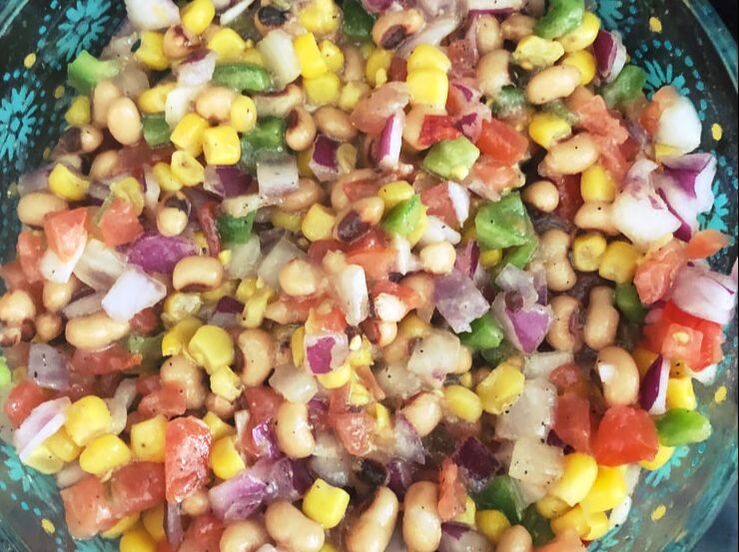
This one is especially for all the guys out there.  This article is originally published on knowledgeformen.com Meditation is all about clearing your mind and achieving a mental state of peace and calm regardless of the circumstances of the outside world. So what’s it all about? What are all these people finding that you may still yet to realize? What are the actual benefits of meditation that can help you in your life and your career? 1. Meditation Reduces Stress “To understand the immeasurable, the mind must be extraordinarily quiet, still.” ~ Jiddu Krishnamurti OK, guys, we all know how life can go. The constant grind to find the next dollar, to seal the next deal, to land the next gig, to leave the legacy of which you can be proud, to achieve, achieve, achieve! All this ambition and drive is great, but it can come with a price, namely, your peace of mind. The problem is, that all this responsibility and angst can overwhelm you and create tremendous stress. The weight of the world can end up on your shoulders. So what can you do with all that pent-up stress? Instead of ignoring it, drinking or drugging over it, fighting it or trying to push it away, many are finding that going inward helps them discover the part of the mind that remains calm. Science has found meditation to be incredibly effective at reducing stress and anxiety. One study found that mindfulness and Zen type meditations significantly reduce stress when practiced over a period of three months. Another study revealed that meditation literally reduces the density of brain tissue associated with anxiety and worrying. (SOP) According to the Harvard resource, 100 percent of insomnia patients reported improved sleep, and 91 percent either eliminated or reduced sleeping medication use. An amazing 75 percent of insomniacs who started a daily meditation program were able to fall asleep within 20 minutes of going to bed. (MBMI) It was found that during meditation the production of the stress hormone cortisol is greatly decreased, thus making it possible for those people to better deal with stress. Sixty percent of anxiety prone people showed marked improvements in anxiety levels after 6-9 months of starting a meditation protocol. (PM) With all that angst and ambition driving your stress levels skyward, why would you wait to shut up the world and find the benefits that inner stillness can offer? 2. Meditation Increases Your Overall Sense of Well Being “Your vision will become clear only when you can look into your own heart. Who looks outside, dreams; who looks inside, awakes.” ~ Carl Jung What can you do with an agitated, busy and depressed mind but live an agitated, busy and depressed life? No more, right? Why not let go of these things and live a life of happiness, joy, and energy? Anyone interested in going beyond the depressed state of Debbie Downer from Saturday Night Live? According to studies, mindfulness meditation increases your psychological functioning and in the process improves your sense of well being. When regularly practiced, meditation has significant therapeutic effects, increasing your quality of life. (SOP) High school students exposed to a relaxation response-based curriculum had significantly increased their self-esteem. (MBMI) Meditators were more independent and self-confident. People who deliberated daily were less fearful of death. It has also been documented that people who use meditation and relaxation techniques may even be physiologically younger by 12 to 15 years. (PM) If that last stat didn’t wake you up just a bit, you may already be dead. If not, then keep reading. There will be tips on how to get started when you’re ready. 3. Meditation Improves Your Emotional Reactivity “There are different things one can do to establish and hasten the peace process. Meditation is one way.” ~ Mike Love There’s nothing more embarrassing and disempowering than a man who constantly flies off the handle, overreacting to every little stressor and negative situation. Kind of like Jackie Gleason used to do from the old “The Honeymooners” show: “One of these days Alice – boom pow to the moon.” What man wants to be at the mercy of his emotional nature, falling prey to being so out of control? Do you? Or would you rather have a strong control over your emotional states? To relate to others, to empathize, to hone your ability to pick up on cues indicating how others are feeling? According to studies, meditation does just that, as well as increase your emotional stability, making you less likely to be influenced by negative people in your life. (SOP) According to Psychologist Mihaly Csikszentmihalyi’s book “Flow: The Psychology of Optimal Experience,” meditation can put you into that flow of life when you are absolutely absorbed in the present moment, finding success in whatever you are doing. Maybe it’s when you are painting, or writing or playing a sport. Research indicates you can reach a state of mind where you are operating in harmony with the ability to perfectly handle all challenges. Only happiness can follow. 4. Meditation Improves Focus and Productivity “When we meditate, what we actually do is enter into the deeper part of our being. At that time, we are able to bring to the fore the wealth that we have deep within us.“ ~ Sri Chinmoy You’re the man for the job. What you need to accomplish has been laid out before you. Do you want to have a razor-edge focus so you can be as productive as possible? Think of the lazer-like focus one of the most productive quarterbacks in NFL history. Tom Brady’s eagle eyes on the field and even on the sidelines tells you this athlete is on the mark. Whereas he hasn’t commented on any meditating habits, his wife Gisele Bundchen’s did credit her own meditation as a cause of his Patriots’ team 2017 SuperBowl victory, saying on the Jimmy Fallon show: “After screaming and praying and calling my family and asking everyone to pray I started meditating, because it was the only thing that could calm me down. I channeled some great energy and I feel like a little responsible.” Research shows that meditation does improve cognition and increases abilities to perform tasks requiring focus. (SOP) Project Meditation reported that a Detroit-based chemical plant posted the following results three years after implementing meditation:
Other clinical findings included inner city middle school students improving grade score, work habits and cooperation, and decreasing absences. (BPMI) So if you are the man for the job, get focused, get on it, and get meditating. 5. Meditation Improves Creativity “Meditation is not a way of making your mind quiet. It is a way of entering into the quiet that is already there – buried under the 50,000 thoughts the average person thinks every day.” ~ Deepak Chopra The free and relaxed mind is open to ideas. And in that state what a man thinketh he may just be able to “create-eth.” Yes, we know that’s not a word, but you get the idea. According to studies, being mindful helps reduce cognitive rigidity leading to some higher inspiration. The science says that meditation increases your creativity, unleashing deeper thoughts that may reside below the surface thinking. (SOP) It’s no wonder that famous creatives like John Lennon and David Lynch made meditation a major part of their life. Make it yours, and you just may come up with a brand new idea … or two … or 1,000. 6. Meditation Improves Your Memory What did you have for dinner two nights ago? Right? There is little chance of recalling. But what about those vital ideas and concepts that would be great to have committed to memory? Such as lines for a play, answers to test questions, data for research, or the name of your boss, or coworkers or girlfriends? A successful man would possess a keen mind and a steel-trap memory. You don’t have to become one of those memory experts who can recall everyone’s name in an audience of 200, but if you simply want to improve your memory, medication does the trick. Research has shown that. In an Indian study in 2004, the practice of Transcendental Meditation was shown to improve academic performance in university students. (SOP) Meditation helps. Remember that! 7. Meditation Improves Your Immunity “People who used to have migraines, don’t. People are sleeping better. People have better relationships. People interact with other people better. It’s been fantastic.” ~ Oprah Winfrey It’s tough to be a powerful He-man or Hercules if you are coughing up a lung, or carrying around Kleenex for your sniffles. Worry not, sneeze not. Yes, meditation can support you around health as well. Different types of meditation have shown to strengthen the body’s immunes system, which makes you more resistant to viruses and infections. (SOP) Throw that hanky away Hercules and get back to business. 8. Meditation Can Lower Blood Pressure and Inflammation Imagine boosting your cardiovascular health by not even moving a muscle. Counterintuitive yes. But it’s true! Research indicates mindfulness and Transcendental Meditation improve your cardiovascular health and reduce your risk of heart disease. (SOP) Heart rate, respiration, blood pressure and oxygen consumption are all decreased with meditation. Thickness of the artery walls is shown to decrease, which effectively lowers the risk of heart attack or stroke by 8 to 15% (PM) As well, 80 percent of hypertensive patients have lowered blood pressure and decreased medications – 16 percent are able to discontinue all of their medications. (BPMI) So instead of letting your blood boil over, sit still and chill. 10. Meditation Can Improve Decision Making Skills Indecision is not a sign of a man standing in his truth or power. Imagine a high-powered executive at a board meeting, claiming “well, I’m not sure which way to go.” Important finding: meditation improves your ability to make decisions. Studies have found that with mindfulness meditation you can improve the functioning of your brain’s decision-making centers. (SOP) So to meditate or not to meditate – it’s your decision. What’s the move? 11. Meditation Can Be Used to Alleviate Pain You’ve heard “no pain, no gain?” Well, the truth may also be “do meditation, lessen pain.” One study claims that meditation reduces physical and emotional pain better than morphine. Hard to imagine, but it’s a scientific finding in a Forbes research article. It’s also been shown that relaxation therapy has been helpful in chronic pain patients. (PM) And chronic pain patients have shown to reduce their physician visits by 36 percent after starting a meditation practice. (MBMI) So if you are struggling with chronic pain… You may want to put down the pills and pick up the “Oms” it might just prove more effective in the long run. This article is originally published on knowledgeformen.com 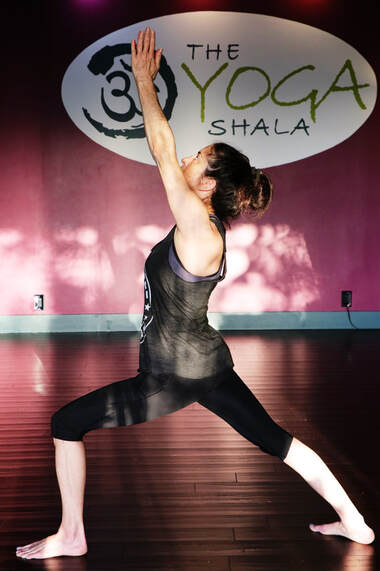 Hey gang! It’s Shelby here, your mid-morning Mysore teacher and General Manager. Can you all believe that we’re halfway through the summer? Where does the time go? This summer has been a bit challenging for me, and maybe you’ve had your own challenges as well. But I try to look at it as a time to grow, to learn about myself. Let me tell you my story: my bedroom has a leak, which has caused extensive water damage and mold. To make a long story short, my entire bedroom was ripped apart: part of the ceiling and walls were removed along with the entire floor. I slept on a mattress in my dining room for two weeks. Not fun! But what I did try to remember each morning was the word “equanimity”. Equanimity is defined as: mental calmness, composure, and evenness of temper, especially in a difficult situation. Isn’t that what we’re working on in our yoga practice? We try to keep the mind focused and calm, the breath steady, even as we move through difficult poses. Our bodies may feel uncomfortable at times, but we try to remain steady. What a great lesson for both on and off the mat: to remain equanimous in the face of adversity. Remaining calm during difficult times is a lifelong work-in-progress. I can’t say I was always equanimous throughout my bedroom ordeal. As I can’t say that my breath is always steady and my mind is always calm in each asana. But I know that I WILL return to the steadiness when I can. Equanimity is always waiting for us: it IS our authentic self. Forget "pot brownies." While this classic cannabis concoction is still immensely popular, there are plenty of other recipes that include cannabis plant on the list of ingredients.
They’re not only delicious, they also allow you to enjoy the benefits of THC and CBD. The world of edible cannabis has nearly limitless possibilities. Whether you’re looking for main courses, desserts, drinks, or desserts, there's a cannabis-inspired recipe to suit your needs. When searching for marijuana recipes, you'll find a couple of products on the list of ingredients, including: Canna-oil The process of creating canna-oil involves decarboxylating raw cannabis (basically, heating it in the oven), tossing it into a saucepan with oil, then straining out the plant material. What you'll be left with is a simple, potent base for cooking. Canna-butter The process of creating canna-butter is similar to the above process, and involves decarboxylating the weed in the oven, placing it into a saucepan with butter and water, straining the canna-butter, and refrigerating it. Get creative and try these amazing cannabis food recipes. Entrees Certain types of foods - including pasta, meat, and potatoes - are staples in many people's lives. And while entrees are meant to nourish our bodies, there's no reason why they can't tempt our palates too. Here are a few cannabis-infused dishes you absolutely need to try. 1. Cannabis-infused Gnocchi Pasta is a staple in most people’s diet. It’s filling, tasty, and affordable. Gnocchi, in particular, is especially hearty, and with this recipe from Munchies, you’ll also be left with the benefits of cannabis too. Ingredients: 3 baking potatoes 1 tbsp olive oil 1 egg, beaten 1 tsp baking powder 3 cups flour Weed-infused butter Grated Parmesan cheese (optional) salt Directions:
2. Canna-Chili Another classic dish, this recipe has been tweaked by Culinary Cannabis to include some cannabis. Ingredients: 2 15 oz cans black beans, drained 2 15 oz cans black-eyed peas, drained 2 15 oz cans dark red kidney beans, drained 2 sweet onions, chopped 8-12 plum tomatoes, chopped 1/3 cup dry red wine 1-2 pounds chopped beef 1-2 tbsp cumin 2 tbsp chili powder 1-2 tbsp dried chili flakes 3 tbsp Lea and Perrins 3-4 large tbsp marijuana butter Directions:
3. Pizza with Cannabis Oil Crust Classic pizza is getting an additional ingredients tossed into the mix thanks to this recipe variation from Cannabis.info. Crust Ingredients: 1 1/2 cups flour, sifted 2 tbsp cannabis-infused olive oil 2 tsp granulated yeast 1 tsp salt 2 tsp sugar Warm water Topping Ingredients: Tomato sauce Mozzarella cheese Basil Directions:
4. Mac, Cannabis & Cheese Swapping traditional butter with canna-butter makes this classic dish, tweaked by The Cannabist, somewhat unique. Macaroni Ingredients: 1/2 lb elbow macaroni or shells 1 tbsp canola oil 1 tsp salt Cheese Sauce Ingredients: 5 tbsp cannabutter 1/2 cup all-purpose flour 3 cups milk, warmed 4 oz mozzarella, grated 8 oz medium cheddar, grated 1 tsp salt 1 tsp paprika 1/2 tsp black pepper 1/2 tsp ground nutmeg 1 cup breadcrumbs 1 tbsp canola oil or canna-oil 2 oz cheddar, grated Onion Rings Ingredients: 1 cup canola oil 1 onion, peeled and sliced Directions:
5. Cannabis Sesame Honey Lime Chicken Wings Chicken wings are a classic dish to serve up at large gatherings. They’re relatively easy to make, and they’re a crowd pleaser. This particular recipe concocted by Cannabis Cheri takes a spin on things, tossing in a little lime juice, honey, sriracha sauce, and of course, cannabis. Snacks and Quick Bites It's tough to go between meals without putting a little something in our mouths and settling our grumbling tummies. With these snack recipes, you can keep hunger at bay, satisfy your cravings, and even add a little marijuana to your life to reap its many rewards. Give any one of these snack recipes a try. 6. Cannabis-infused Guacamole The classic avocado-based dip has been spun to include cannabis oil. Cannadish has created their own version of guacamole, and it’s pretty easy - simply mash some avocado with cannabis oil, then stir in chopped tomatoes, onions, cilantro and lemon juice (although as guacamole purists, we’d have to recommend using lime juice) . 7. Cannabis Popsicles Easy to make and totally refreshing, popsicles make the perfect treat on a hot sizzling day. This recipe from Original Weed Recipes combines mangos (or any fruit of your choice), yogurt, and little bit of what they refer to as “medicated” coconut oil. 8. Cannabis Fruit Galette A fancy name for pancakes, “galette” may be a simple recipe, but it’s taste is anything but. For this cannabis fruit galette recipe from Sous Weed, you’ll be filling the galette with a variety of fruits, blackberry jam, and lemon verbena. To top things off, a dollop of whipped cream completes a truly delectable dessert. 9. Rosemary Mashed Potatoes with Cannabis Eat Your Cannabis has put its own spin on traditional mashed potatoes by including canna-butter in place of olive oil or animal butter. Ingredients: 4 large potatoes, cubed 1/2 cup canna-milk 4 tbsp cannabutter 2 tbsp fresh rosemary, minced Salt and pepper Directions:
10. Cannabis Artichoke Dip You’d be hard-pressed to find someone who doesn’t like artichoke dip. Just about anything can be dipped into this dish, making it a universal dip to serve with various appetizers. Wake and Bake’s take on artichoke dip calls for a few cashews, mustard, swiss chard, artichoke hearts, and some marijuana-infused walnut oil. Desserts No meal is complete without a sweet treat to top things off right. Try these marijuana-inspired dessert recipes to satisfy your sweet tooth. 11. Cannabis Caramels You might be able to find traditional caramels at the grocery store, but you won’t likely find any infused with cannabis. This easy-to-make recipe from Original Weed Recipes combines canna-butter along with corn syrup, brown sugar, and vanilla for a tasty treat. 12. Cannabis Snickerdoodles Snickerdoodles might be the most commonly baked cookies in the world. Original Weed Recipes’ version takes the classic recipe known to millions of grandmothers and simply substitutes regular butter with canna-butter. Ingredients: Canna-butter Cookie flour 1 egg Sugar and cinnamon (to roll the cookies in) Directions:
13. Cannabis Donut Holes Just as good as the whole donut, donut holes are just enough to satisfy our sugar cravings. This recipe from Munchies adds canna-butter to the mix, along with conventional ingredients like flour, sugar, and eggs. 14. Chocolate Cannabis Peanut Butter Bars There may never be a more perfect union than chocolate and peanut butter, and these bars from Original Weed Recipes cleverly sneaks THC-cannabis flower alongside the chocolate, peanut butter, sugar, flour, and eggs. 15. Cheesecake with Cannabis A delicacy in the dessert sphere, cheesecake is a timeless treat that can take on various forms, including chocolate, fruit, or simply plain. The Weed Scene’s take on cheesecake involves adding canna-butter, in addition to cheesecake recipe staples like cream cheese, sugar, flour, and, of course, the graham cracker crust. Final Thoughts With so many different recipes out there with THC-laden or CBD-rich marijuana, there's no reason why you can't enjoy your favorite dishes or desserts while taking advantage of the medicinal and wellness benefits of the plant. Use your imagination, get creative and give any one of these cannabis-inspired recipes a try! This article originally appeared on myfoli.com The word “spirituality” means different things for different people. For some, spirituality is associated with religion and is tied to concrete rites and rituals. For others, meaningful activities like swimming, making art, and walking through the woods brings on a spiritual experience. For the most part, though, the word spirituality has become as ambiguous and vague as the word “the,” and is often stigmatized by associations to “hippy-dippy” new-age philosophies, patchouli, dreadlocks, and yoga pants.
Spirituality seems to have become confused with religion, as it is common to now associate as “spiritual” or “not spiritual”. However, at its core, spirituality is a sense of connection to something bigger than ourselves, and is not an ideology to believe or not believe in. Spirituality is, in fact, what gives life a sense of meaning and purpose. Practicing spirituality has scientifically-validated benefits, making it important for each and every person, not just yogis in the Himalayas. If you find yourself skeptical about the necessity of spirituality, check out these 10 reasons why spirituality matters for the average Jo(sephine): 1. Be Present The spiritual life is based in the present moment, as the present moment is the only real moment; the past and future are concepts in the mind. When living with our minds in the present moment, we function with greater focus, clarity, and spontaneity. We also feel greater levels of joy, as happiness is only accessible in the here and now. 2. Get Smart Studies show that many spiritual practices, especially meditation, result in increased grey matter area in the brain. Among its many benefits, regular meditation leads to increased cognition, improved focus, attention, and ability to perform under stress, and higher levels of emotional intelligence, all of which contribute to enhanced work performance. 3. Be Healthy Most spiritual paths and religious traditions recommend abstaining from behaviors and substances that are detrimental to health, such as drinking, smoking, using drugs, committing crimes, and harming others. Many paths, such as Ayurveda and Buddhism, even make dietary recommendations, which can lead to a lower body weight and lessened risk for chronic health problems. 4. Let Go of Grudges A basic tenet of most spiritual paths and traditions is forgiveness. When we forgive ourselves and others, we are able to let go of blame, negative feelings, and anything else holding us back from moving forward in our lives. In fact, studies now show the positive health benefits of forgiveness, which include lowered risk of heart attack, lowered blood pressure, improved cholesterol levels, and reduced levels of pain, depression, anxiety, and stress. 5. Bounce Back Faster Studies show that people who feel a sense of spirituality have greater resilience to hardships. Those with a spiritual outlook have an easier time moving through challenges by finding meaning in difficult situations. High resiliency is also a trait associated with the most successful people in the world. 6. Make Better Decisions Decision-making is an area that many people struggle with. By simply identifying a set of values that we feel aligned with, we can make decisions that help us feel connected to the greater whole and with a sense of purpose. Spiritual paths also tend to support the development of faith and trust, which helps with stress-reduction in times of uncertain decision-making. 7. Enjoy Amazing Relationships Research in social science demonstrates that humans are neuroscientifically hardwired for connection, and that connection is what brings meaning to life. Interconnectedness, which is at the core of spirituality, helps us to recognize the shared human experience and feel compassion for others. And when we feel compassion, we enjoy the company of others more and find it easier to find common ground. 8. Release Stress and Anxiety When we feel a sense of connection to a higher power, we experience mental and emotional freedom. Personal spiritual practices, such as yoga, meditation, running, gardening, and other meaningful activities, are all correlated with lower levels of stress and tension. 9. Enhance Creativity Mahatma Gandhi once said, “True art takes note not merely of form but also of what lies behind.” Many of the great artists in history attribute their creations to a higher power. When we are relaxed and in the present moment we can more easily experience the state of flow, which leads to more spontaneous ideas and greater levels of creativity. 10. Be Happily Alone In our modern day culture, it is all too easy to never be alone. If you walk into any restaurant or cafe and look for the people sitting by themselves, chances are they will be absentmindedly eating their food while scrolling through Instagram and sending Snapchats to people in other locations. People in this day and age find it difficult and even painful to be alone, both metaphorically and physically. However, when armed with spirituality, being alone is a gift, offering an opportunity to look inward and know oneself. Because, as almost all spiritual traditions teach, our Self is all we truly have. Spirituality teaches us how to ENJOY being alone, so that we can truly enjoy being with others. Full article originally posted on ArtofLiving.com By Amanda Turner In a world filled with distractions, trying to find a way to have a zen session without something popping up to break us away from self-care in inevitable. Taking time to have a zen session each day allows you to clear your mind of the clutter and distractions that happen each day, so finding a way to squeeze it in and not be distracted is essential. To discover ways to dedicate time to meditation, take a look at these tips to avoid distractions.
Prioritize Self-Care It is essential to dedicate time each day for meditation and self-care, so treat it as such. Whether you make a point to have your zen session every morning or every night when there are fewer distractions, or you plug it into your calendar to make sure you don’t overbook yourself, make sure that self-care is considered a priority for you. Use “Do Not Disturb” Whether you use your phone for guided meditation or an app that walks you through a yoga sequence - it is hard to not peek your eye open when you hear that “ding” letting you know that you just received a text or an email. Even the most disciplined individuals will find it hard not to take note of your phone making a sound during meditation. Most modern phones have a “Do Not Disturb” option to keep those notifications from happening during your moments of zen. Create a Routine Did you know that when you create a routine, your mind and body will automatically start to get used to tuning into certain tasks at certain periods of time? Whether you want to create a routine for creativity, physical fitness, or for meditation, your body will begin to look forward to these tasks at certain periods of time each day. Create a routine for your mind and body so that it will tune into “zen mode” for whatever time you decide to dedicate a zen session during the day. Get Rid of Excess Noise During your zen session, make sure that there is as little excess noise as possible. If possible, call a repairman to fix any noisy or faulty appliances so that they don’t distract you throughout the practice. On the same note, you may experience your family and friends that are staying with you feeling the liberty to interrupt your session without understanding its importance. If you have family that is prone to opening the door during your zen session, consider putting a note outside the door to let them know this is “you time” to avoid having to pause your time for meditation. Now is Not the Time for Multitasking Your zen session is a time to clear your mind and focus on being in the present. This helps mitigate stress, anxiety, and even depression. Now is not the time to try and do yoga while also playing with your child or dog. When you prioritize your zen session, make sure that you are not multitasking to also squeeze in other tasks at the same time. With continued research, fans of cannabis - both old and new - are coming to realize how useful CBD can be as part of an overall wellness regime.
Cannabis is not just something that "stoners" use on a recreational basis in an effort to get high. While it certainly can be consumed for recreational purposes, cannabis has so many more uses. In fact, science continues to show us how the various cannabinoids in cannabis - including CBD - play a key role in health and wellness and serve as a natural alternative to traditional remedies for various ailments. With continued research, fans of cannabis - both old and new - are coming to realize how useful CBD can be as part of an overall wellness regime. How CBD Helps Your System CBD - or cannabidiol - may have some incredibly promising cannabis health benefits to the mind and body, but how exactly does it work to do this? CBD's ability to promote better health and wellness stems from its interaction with the endocannabinoid system of the body. This system is tasked with regulating brain, endocrine, and immune functions, and influences various experiences in the body, including appetite, pain, stress, anxiety, inflammation, and mood, among others. More importantly, the system is responsible for maintaining homeostasis - or balance - in the body that's needed to keep the body healthy and free of disease and ailments. The endocannabinoid system is made up of endocannabinoids, which are neurotransmitters that bind to cannabinoid receptors located throughout the central and nervous systems. The body produces its own cannabinoids that bind to these receptors, but cannabinoids from outside sources - such as CBD and THC from the cannabis plant - can also serve a similar function. When cannabinoids interact with the receptors of the endocannabinoid system - either directly or indirectly - they can relieve pain, minimize inflammation, improve mood, promote better sleep, and alleviate stress and anxiety. Why Incorporate CBD Into Your Wellness Routine? As already mentioned, the endocannabinoid system's main job is to maintain homeostasis in the body. The body's internal conditions must constantly be controlled and in proper balance because the cells depend on this environment to function properly. If the conditions are not optimal, certain processes will not function the way they should, and that can lead to disease. CBD can help the endocannabinoid system maintain this balance and help the body adapt to outside stressors. As such, adding this cannabinoid to your daily wellness regime can help you boost your overall level of health and wellness. Here are four main areas in which users can take advantage of the benefits of CBD. Promote Better Sleep Good sleep is integral to overall health and wellness. Lack of proper sleep can bring about a myriad of health issues. In fact, not getting enough quality sleep can lead to high blood pressure, obesity, diabetes, and even heart disease. Many people go to great lengths to try and improve their sleep patterns, including taking sleep medications. However, CBD may be an effective natural alternative to pharmaceutical meds. Studies have been conducted on CBD and its relationship with sleep, revealing that the cannabinoid can encourage better sleep and may be able to treat specific sleep disorders, including insomnia, sleep apnea, and narcolepsy, to name a few. Induce an Anti-Inflammatory Effect Inflammation in the body can lead to a host of issues because of the damage it causes to the cells and tissues as a result of oxidative stress from free radicals. A high level of oxidative stress can cause serious damage, even to our DNA. Recent research has shown a link between CBD and reducing inflammation. More specifically, CBD can mimic how the immune system works to alleviate inflammation in the body. By reducing inflammation, a number of ailments can be relieved, including pain and skin conditions. Reduce Stress and Anxiety Perhaps the most well-known reason for introducing cannabis into a daily regime is to reduce stress and anxiety. Cannabinoids' role in alleviating stress and anxiety stems from their interaction with certain receptors that influence serotonin. Low levels of serotonin in the brain can cause anxiety. Medications that target serotonin levels - known as selective serotonin reuptake inhibitors (SSRIs) - work to increase the level of serotonin in the brain by blocking reabsorption of the neurotransmitter. This, in turn, can alleviate stress and anxiety and boost a person's mood. CBD and THC can mimic the work that SSRIs do to make serotonin more readily available, thereby helping to relieve stress and anxiety and help patients feel better. The cannabinoids do this by enhancing 5-HT1A transmission and may affect serotonin faster than medications. Promote Healthier Skin CBD's anti-inflammatory and antibacterial properties are particularly useful when trying to improve the look and feel of the skin. More specifically, it can help alleviate certain skin conditions, such as acne, psoriasis, and eczema. Studies have found that CBD and THC serve as effective agents in the function of sebaceous glands, which secretes "sebum," an oily substance which can clog pores and cause acne flare-ups. Dilation of CBD topicals can minimize the secretion of sebum and therefore help keep the skin free and clear of breakouts. Different Ways to Incorporate CBD Into Everyday Life There are various ways that CBD can be used and implemented into your daily regime, depending on your comfort level. Here are a few formats that CBD is available in: Edibles. CBD can be quickly and easily added to beverages and foods and ingested orally. Whether you add the product yourself and create your own recipes or purchase edibles that are already infused with CBD, edibles are an easy and convenient way to add CBD to your daily regimen. Tinctures. Another simple way to consume CBD is to use tinctures that can be taken sublingually, meaning under the tongue. The great things about tinctures is that they provide CBD in a concentrated form that bypasses the digestive system and takes effect more quickly once it is absorbed through the mucous membrane under the tongue. Topicals. Individuals who are looking to alleviate specific pain points may find topicals more convenient, as they can be applied and rubbed onto the exact areas where the pain is being experienced. Topicals are also useful for those who wish to apply them to the skin as a means to boost skin health and combat acne. Vapes. To quickly take the edge off and alleviate stress or anxiety, vapes tend to work quite well. Consuming CBD in this manner also takes effect rather quickly because the CBD does not have to be digested before it starts working. Capsules. An easy way to take CBD is in capsule format. That said, exact dosing might be a bit more difficult. Final Thoughts CBD continues to show great promise in the world of health and wellness. With so many different applications - including promoting better sleep, improving skin health, alleviating anxiety, and combating pain - CBD certainly has a bona fide place in this sphere. And with a variety of different modes of application and consumption, CBD can be implemented according to each individual user's comfort level. This article originally appeared on myfoli.com  In Sanskrit, Alternate Nostril Breathing is called Nadi Shodhana Pranayama, which translates to “subtle energy clearing breathing technique”, and it has many benefits. Alternate Nostril Breathing helps calm the mind, reduce anxiety, and bring a feeling of relaxation to the entire body. It also relaxes the mind in preparation for meditation, which can be helpful for those struggling to settle down before meditating. When performed for just a few minutes, Alternate Nostril Breathing can instantly reduce stress and fatigue, and is a quick and efficient practice to do before high-stress situations such as job interviews and public speaking engagements. How To Do Alternate Nostril Breathing
The Benefits
3 Things to Remember
By Amanda Turner As the seasons change, it is easy to become overwhelmed and feel as though you are forced to passively accept the challenges that come your way. When that overwhelming feeling sets in, you may have reached a state of imbalance that seems impossible to get out of. Fortunately, balancing your life does not have to be a mystery. Here is how to create a balanced life in a season of chaos and stress:
Preventative Care Ayurveda, the ancient, sister-science of yoga, offers us countless recommendations for how to live a healthy, balanced life. The preventative care that this system of health encourages works to prevent overwhelm and instead keep you grounded and at ease for the long-term. A few general recommendations include creating routine and giving yourself time for self-care on a regular basis. Healthy Lifestyle One of the best ways to reduce stress is to incorporate gentle exercise into your schedule. Yoga, swimming, even a walk in the park with your dog can be excellent ways to get active in a non-competitive environment. If possible, consider exercising with a friend or family member, so you can enjoy quality time together while creating space from the challenges of your day-to-day. Another important factor in balance is ensuring you eat good food and get enough sleep. These are two of the most basic needs that often get brushed aside when life gets hectic. Instead of resorting to take-out and staying up well past midnight, give yourself the gift of a mindful meal at home and a solid night of slumber. Home Maintenance When life feels out of control, the last thing you want to worry about are home repairs. Make sure your home is not on your to-do list by keeping up with home maintenance and scheduling any repairs that need to be completed. When your home is running smoothly, your life will feel easier. Clear Intentions If you have a growing--or endless--to do list, it’s possible that the weight of these requirements is contributing to your daily stress in a very negative way. Instead of constantly worrying about all of the things that need to be done, set clear intentions each day for two to three tasks that must be completed. This will help you focus on what is a true priority, and relax about all the rest. Distinct Boundaries Finally, check in to see where your focus is primarily resting. If you are working more than feels comfortable, give yourself more free time. On the other hand, if you have been putting off more work than you should, get yourself back into a consistent routine. Setting clear boundaries for your work/life balance will ensure that you stay aligned to your goals, without going overboard, in one direction or another. When you’re in the thick of stress and chaos, creating a balanced life can feel impossible. However, it’s never too late to incorporate a few of the above tips. As you integrate these changes into your life, notice how formerly frustrating situations can seem less intense and your life can feel more at ease. |
Archives
March 2024
Categories
All
|

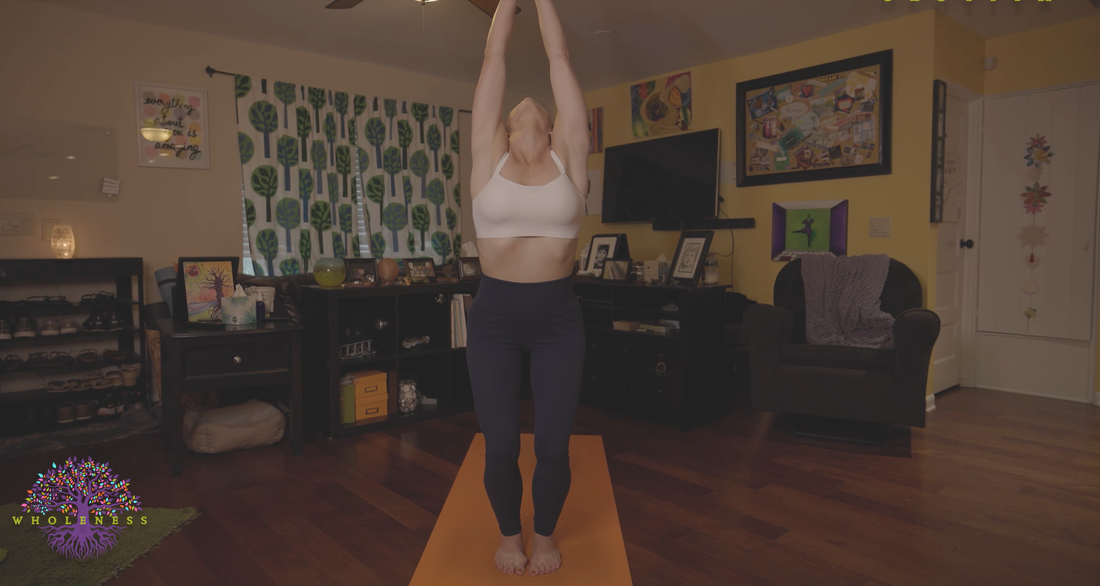
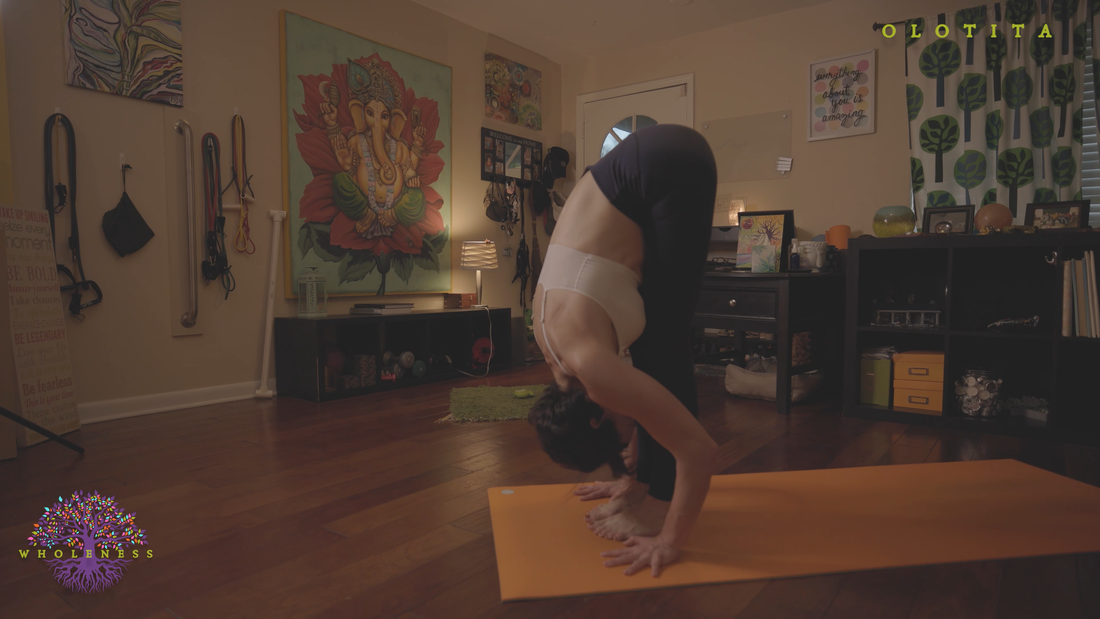
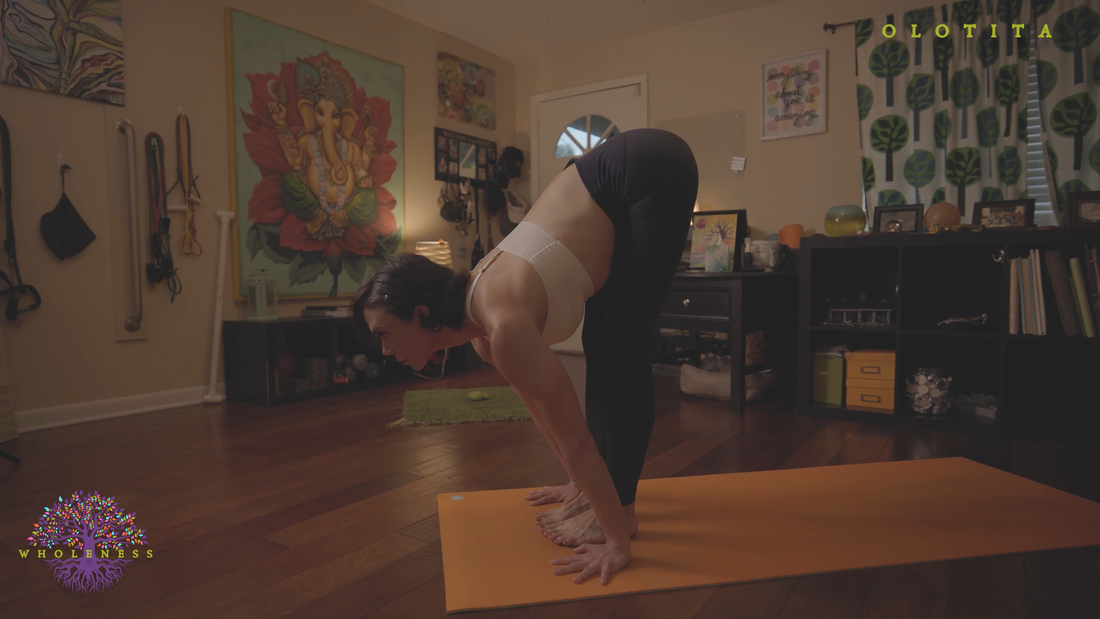
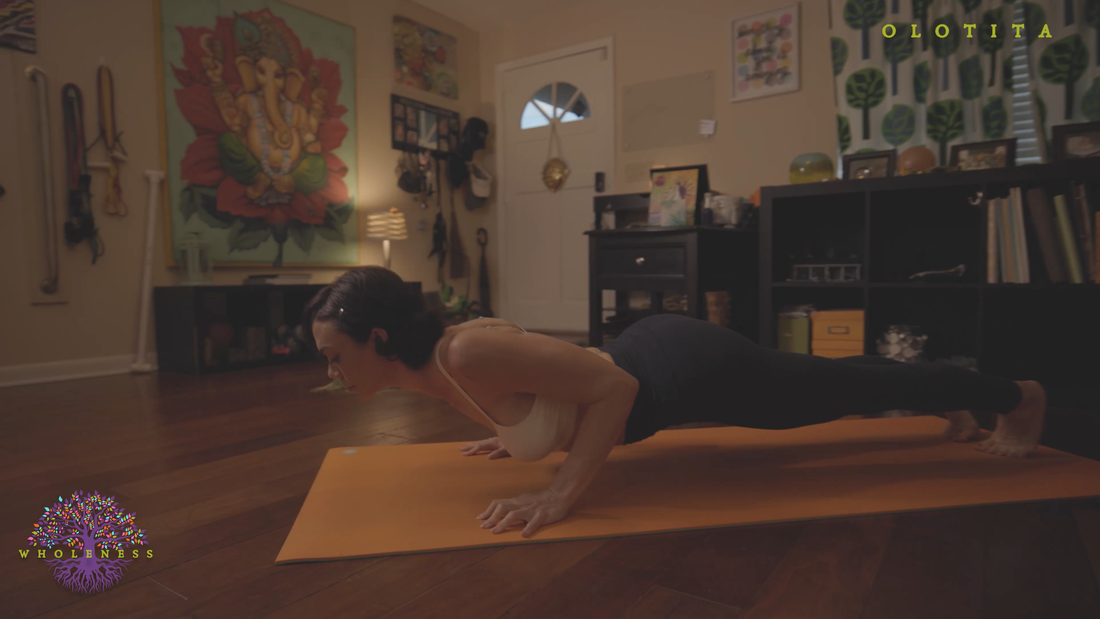
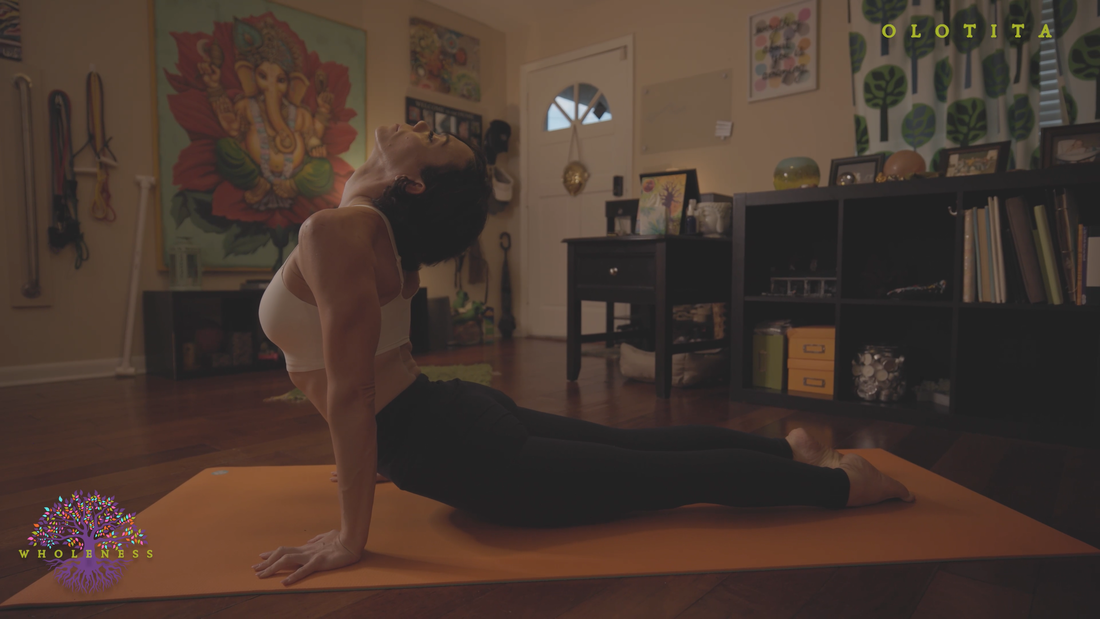
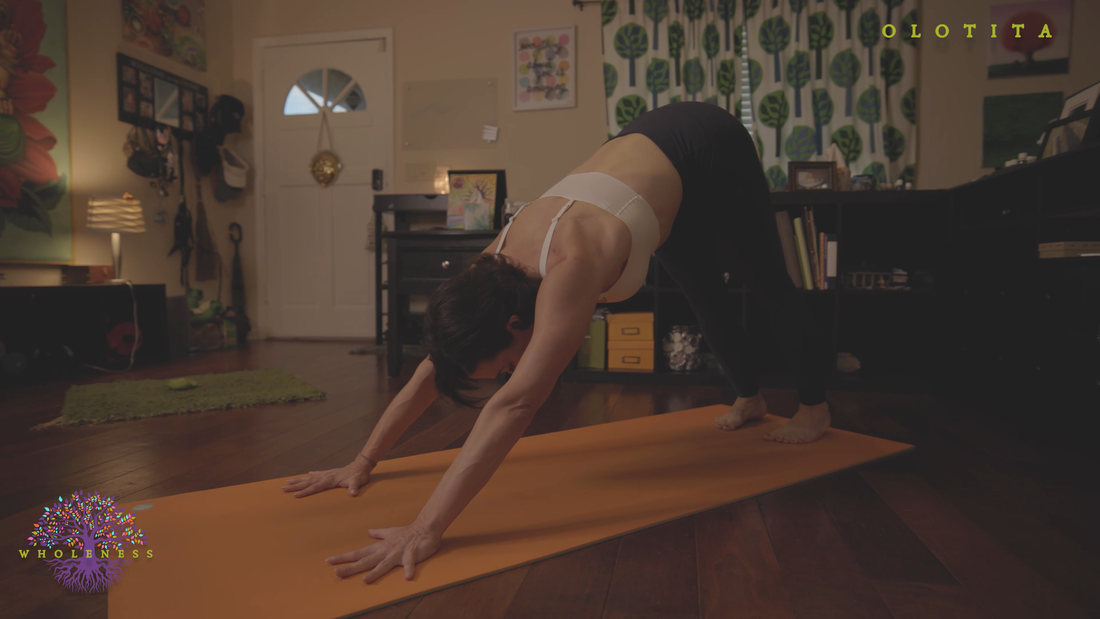
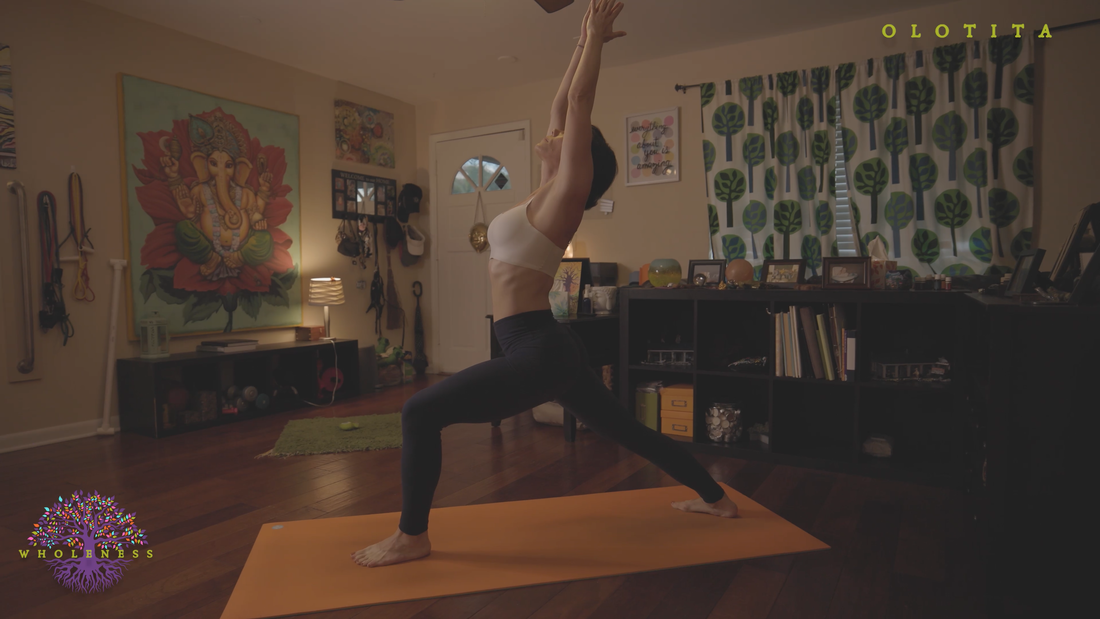
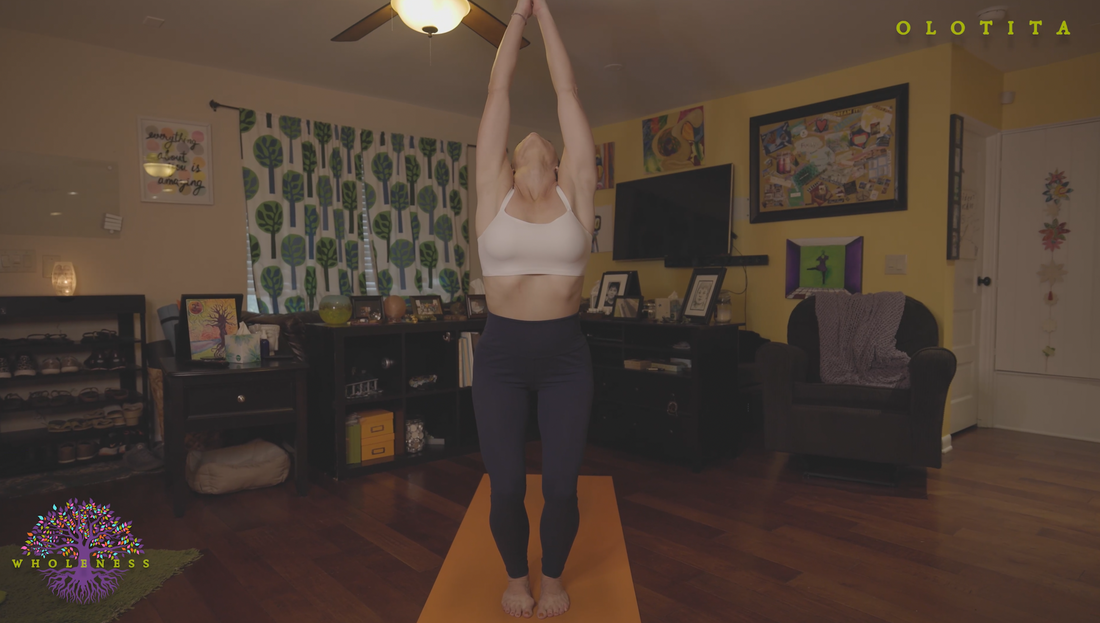
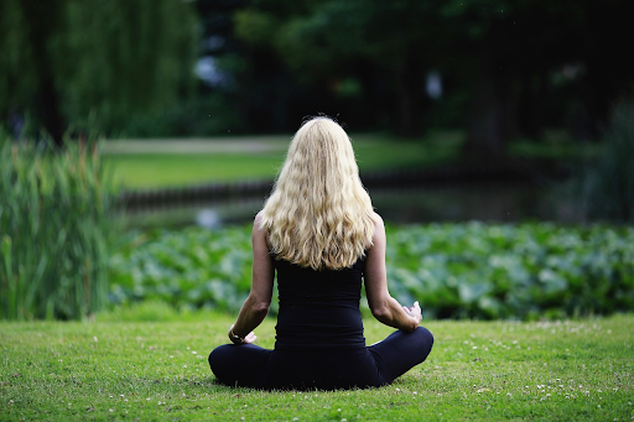


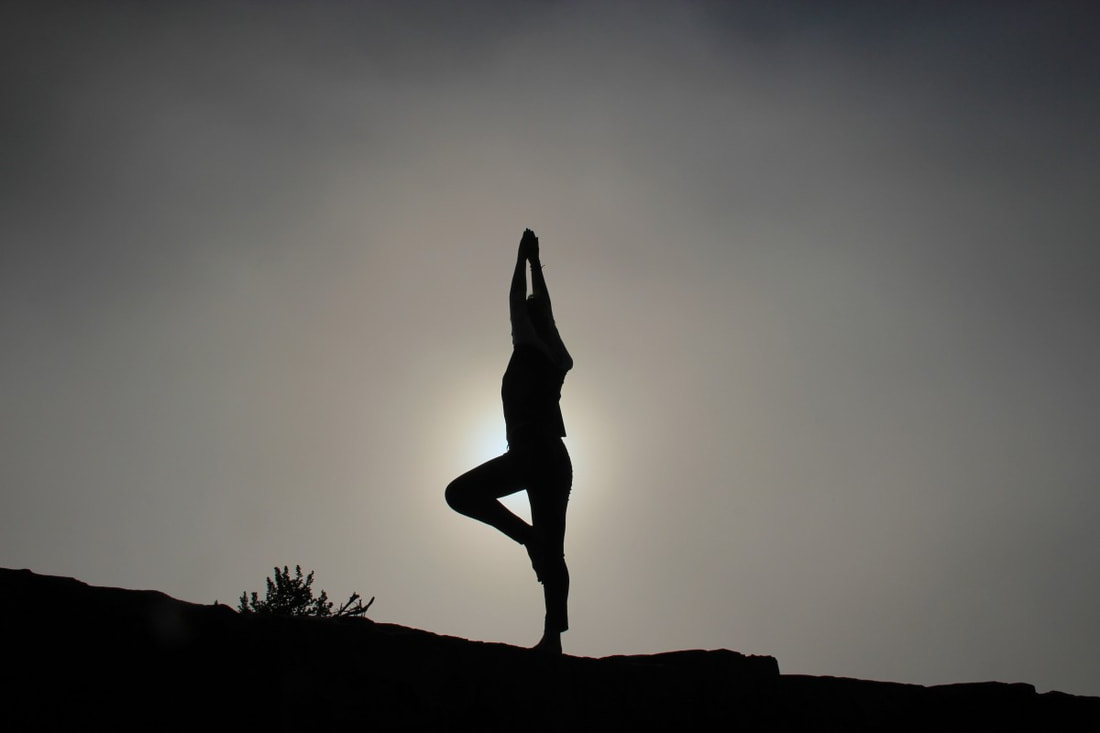

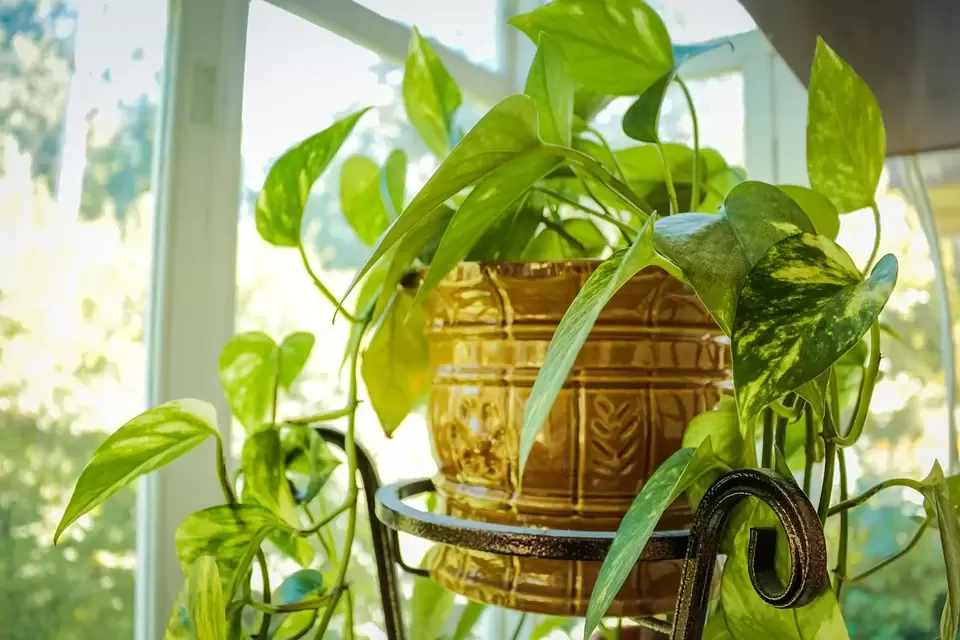
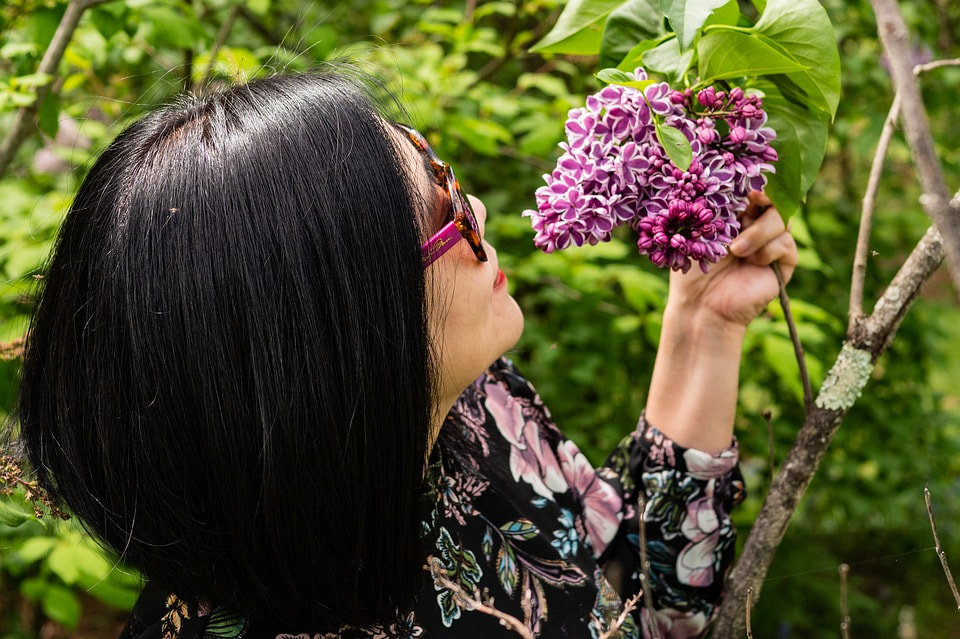
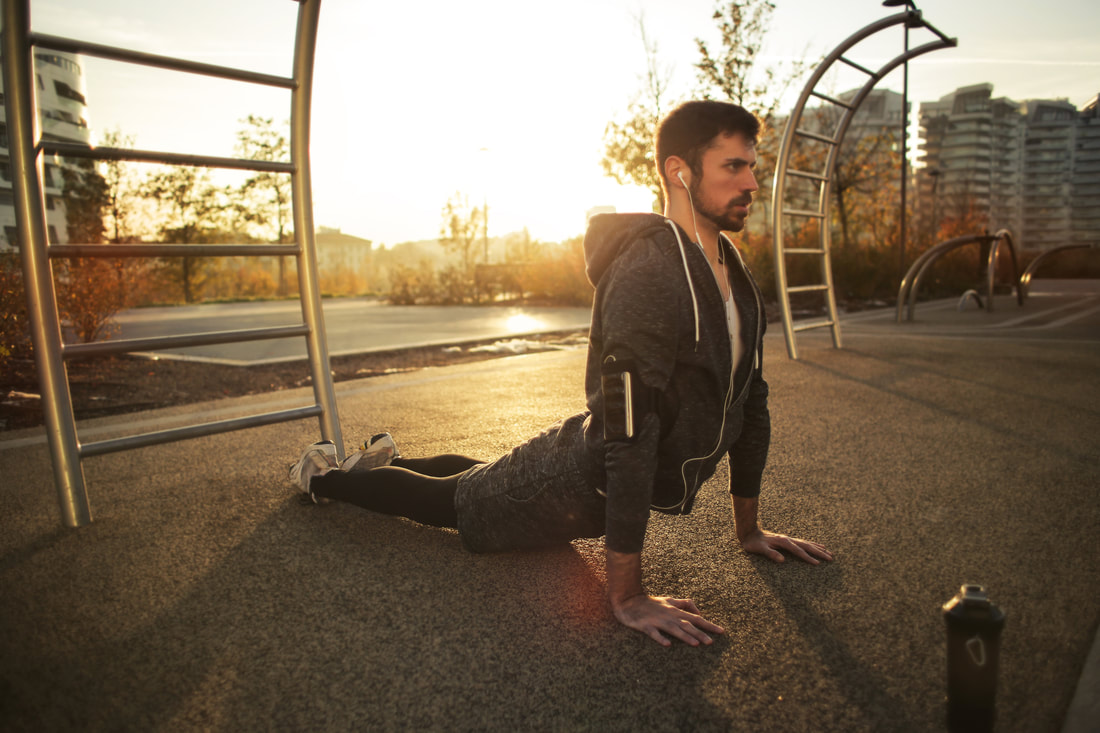

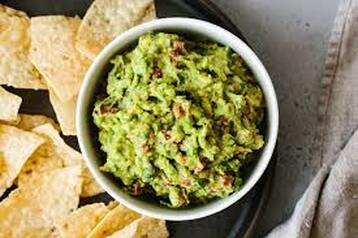
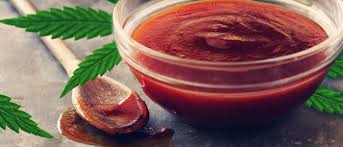
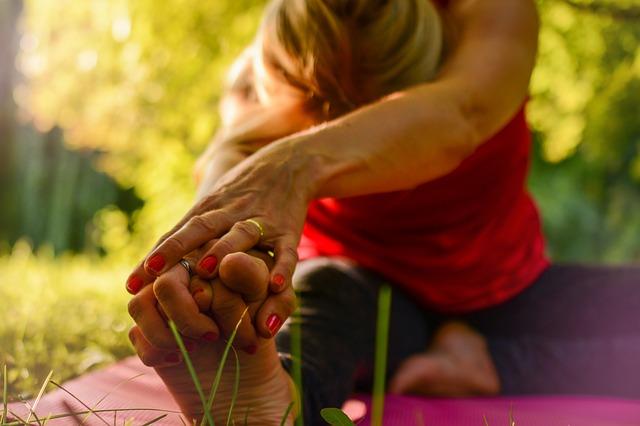
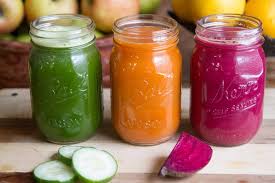
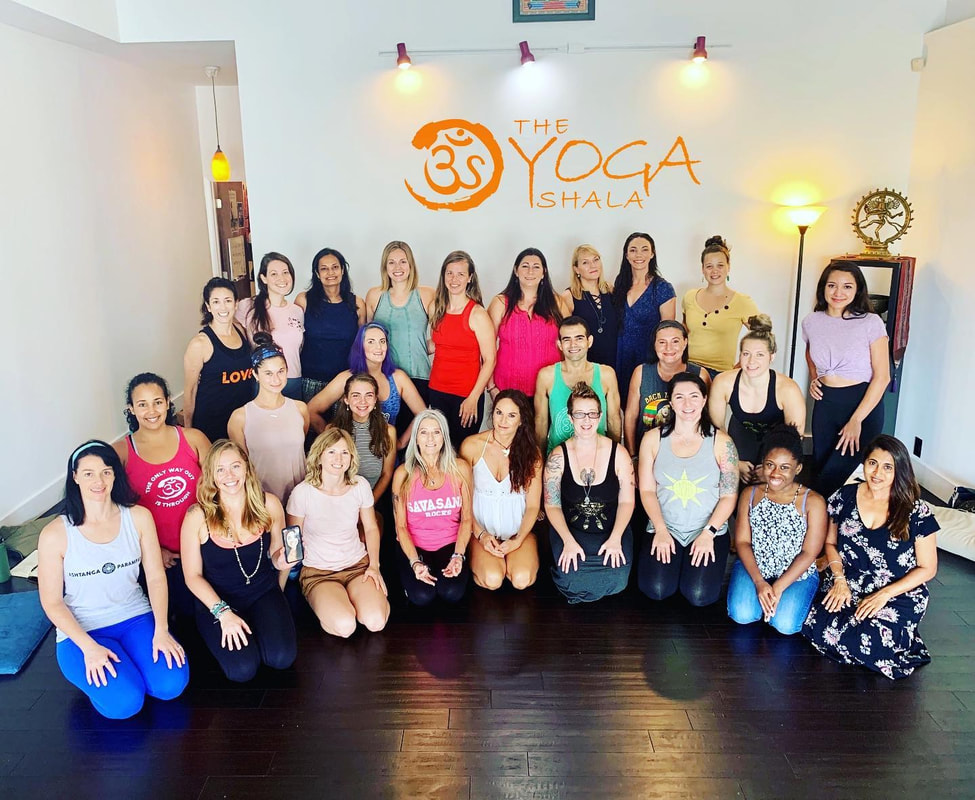




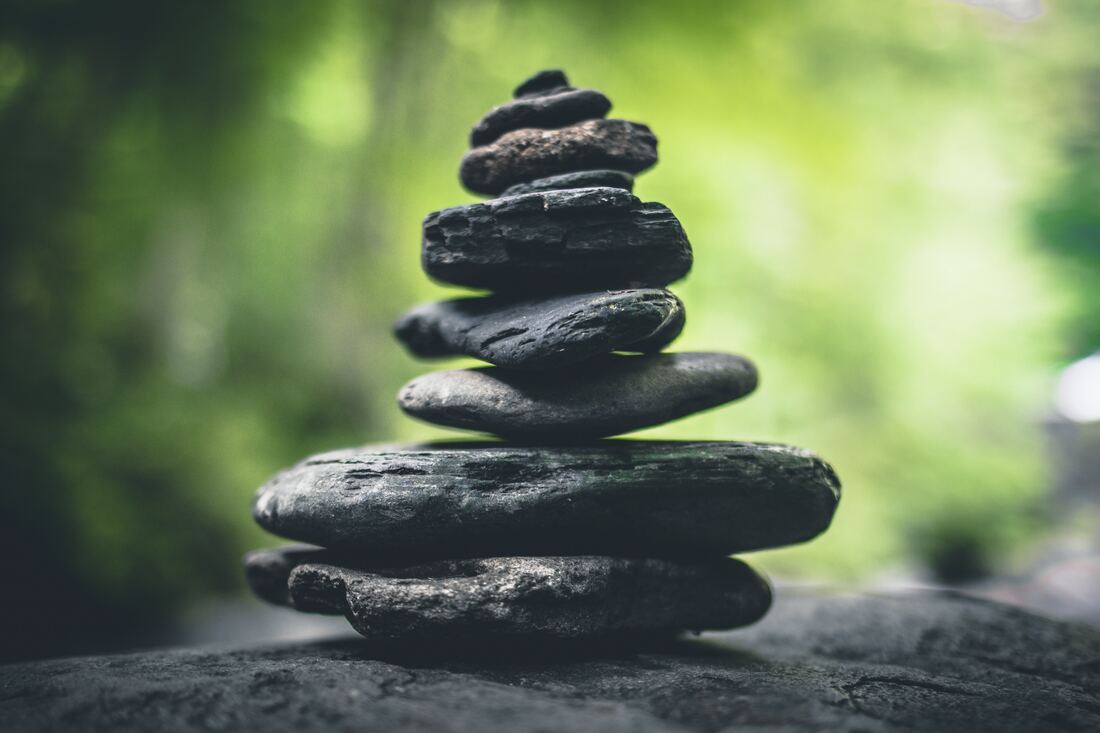
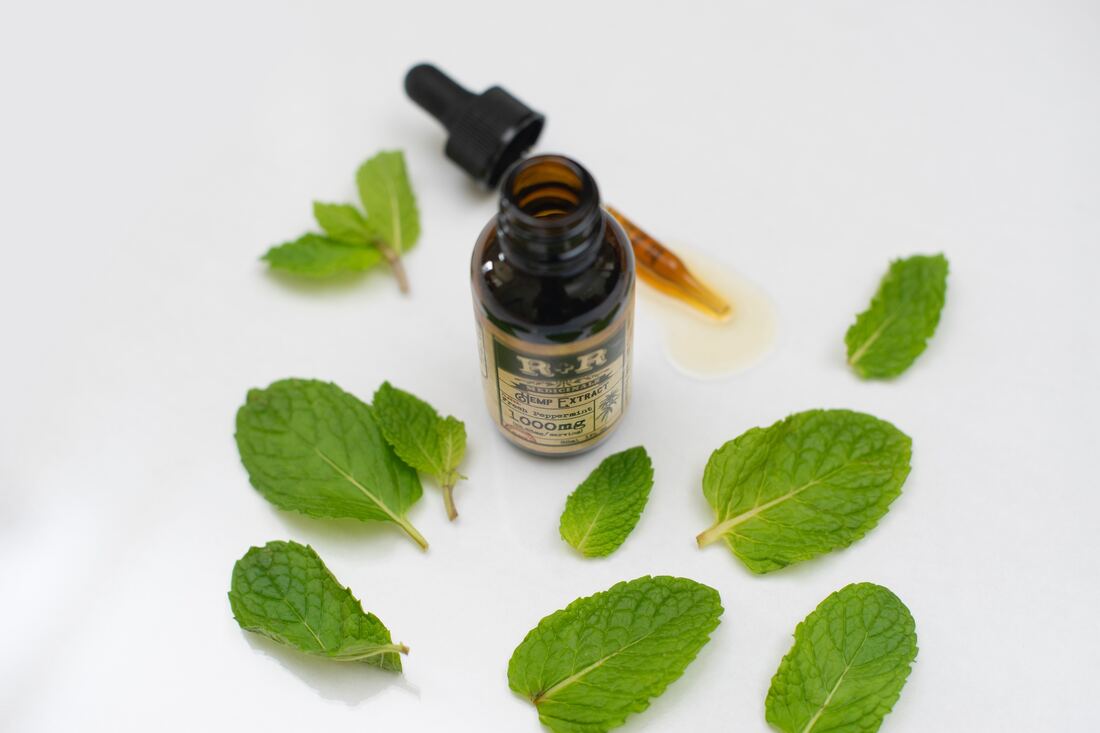

 RSS Feed
RSS Feed
